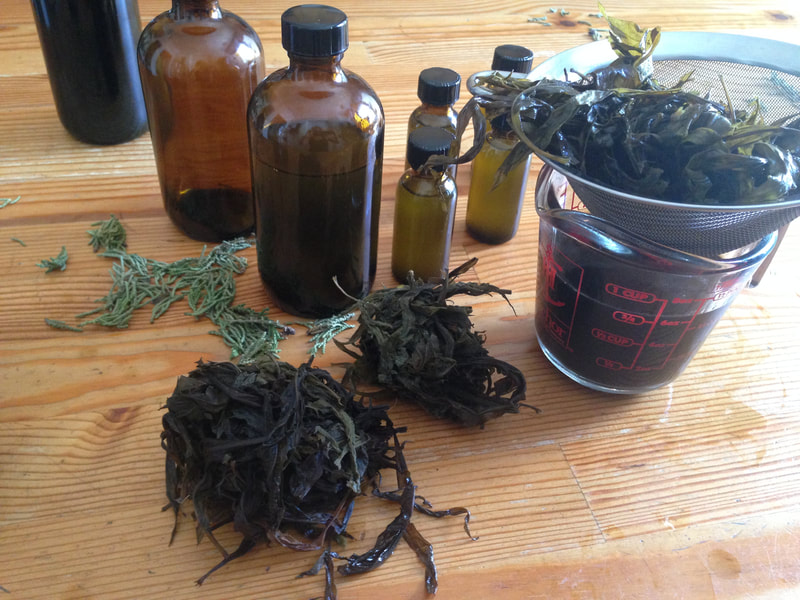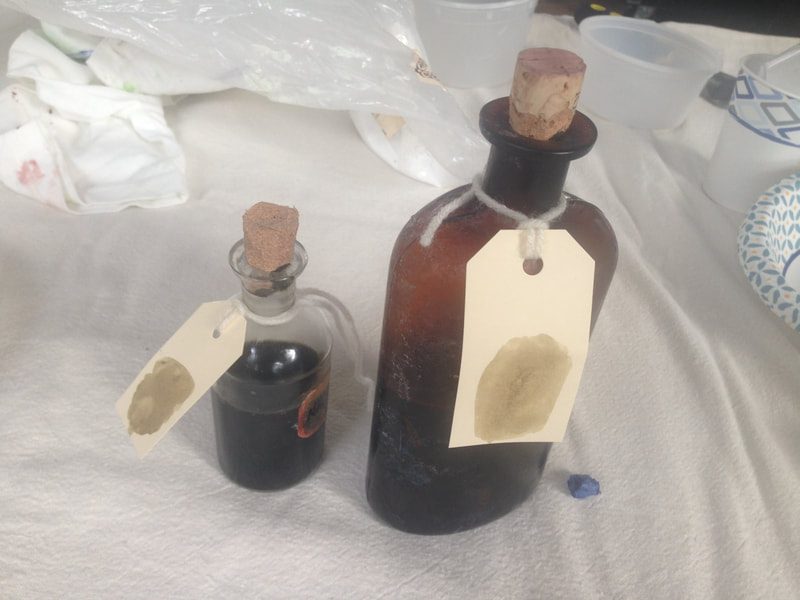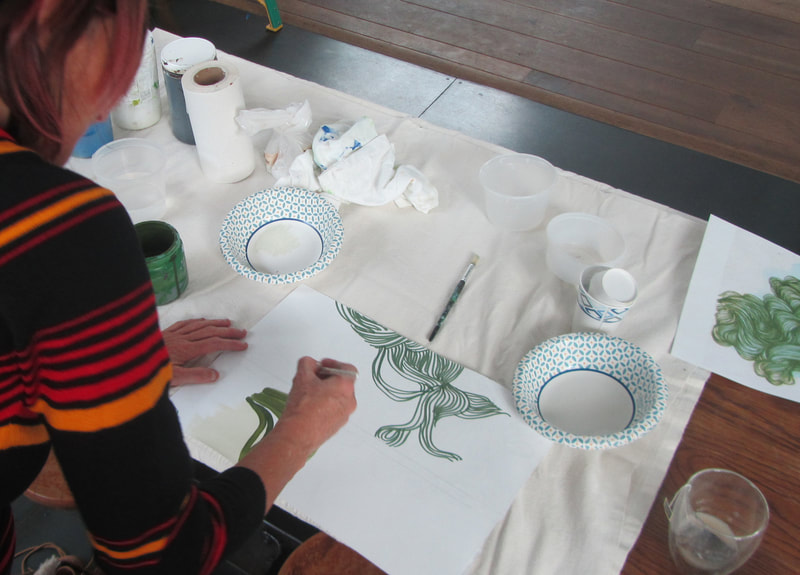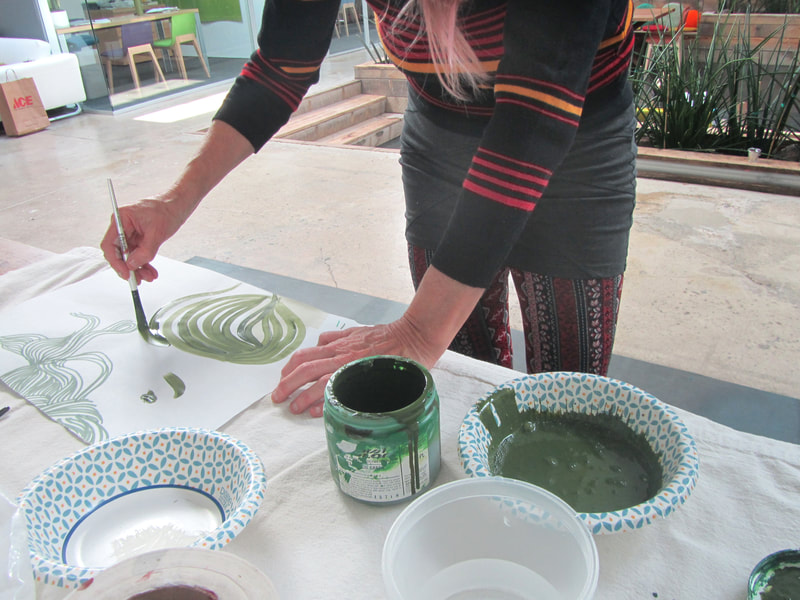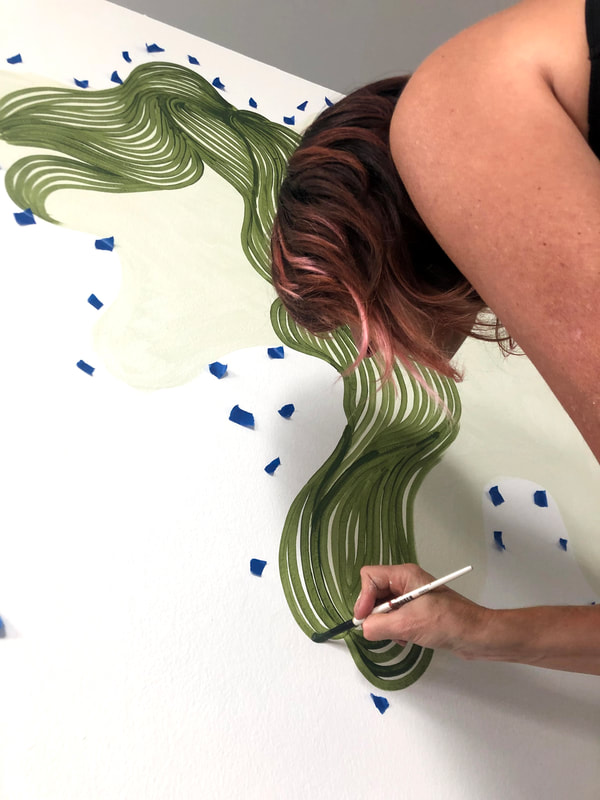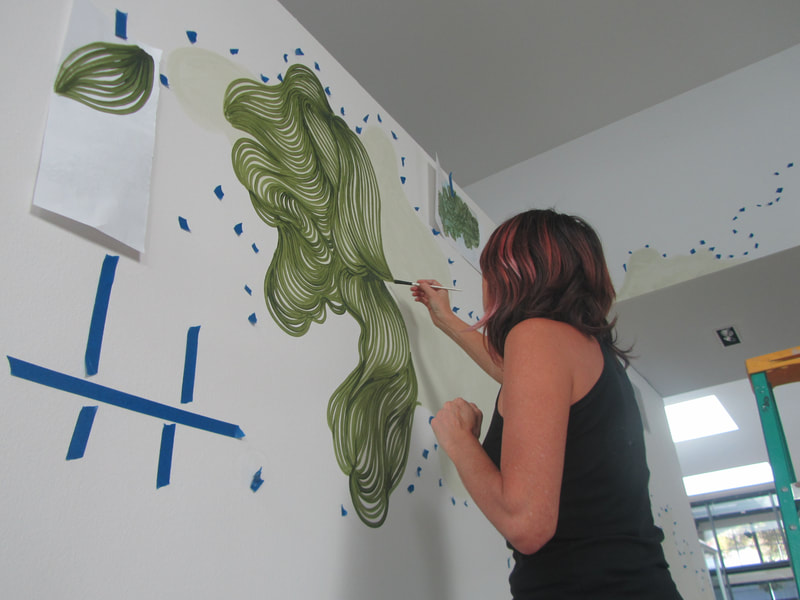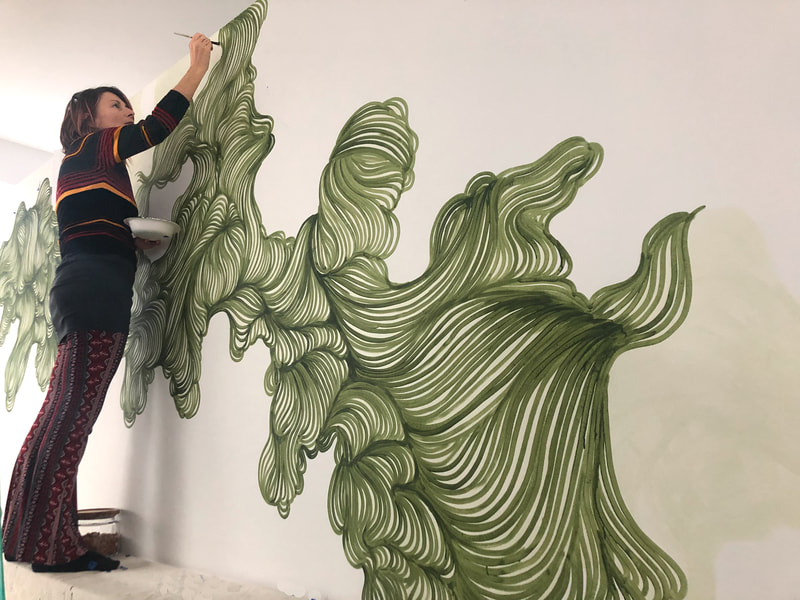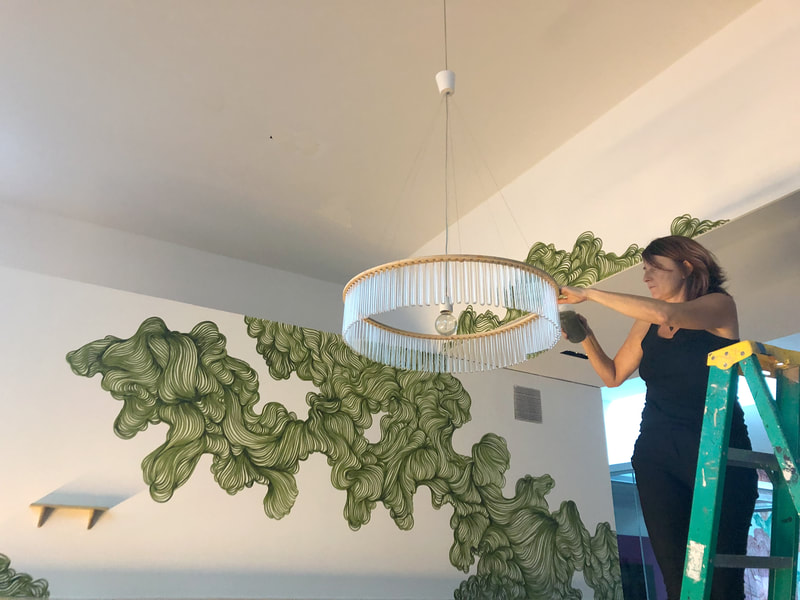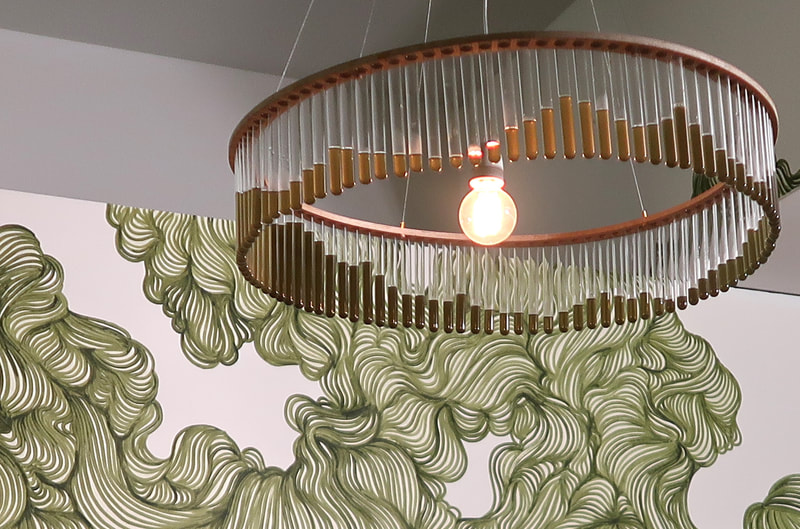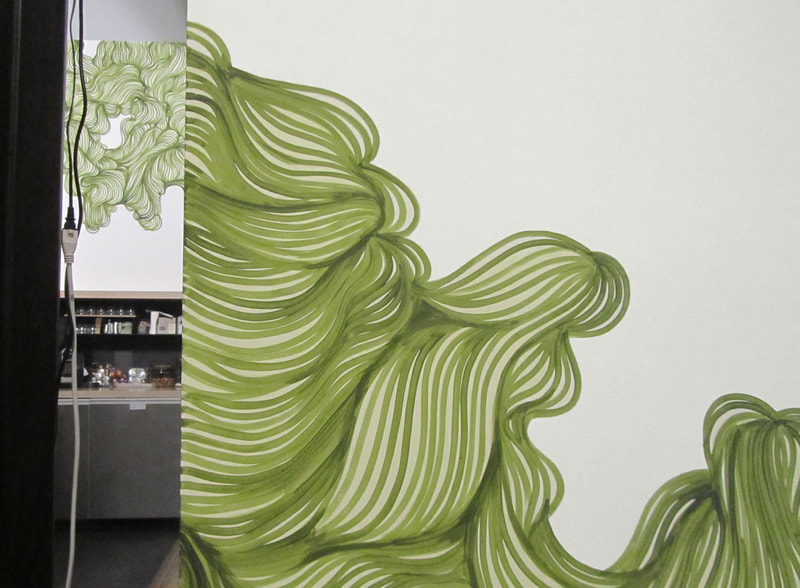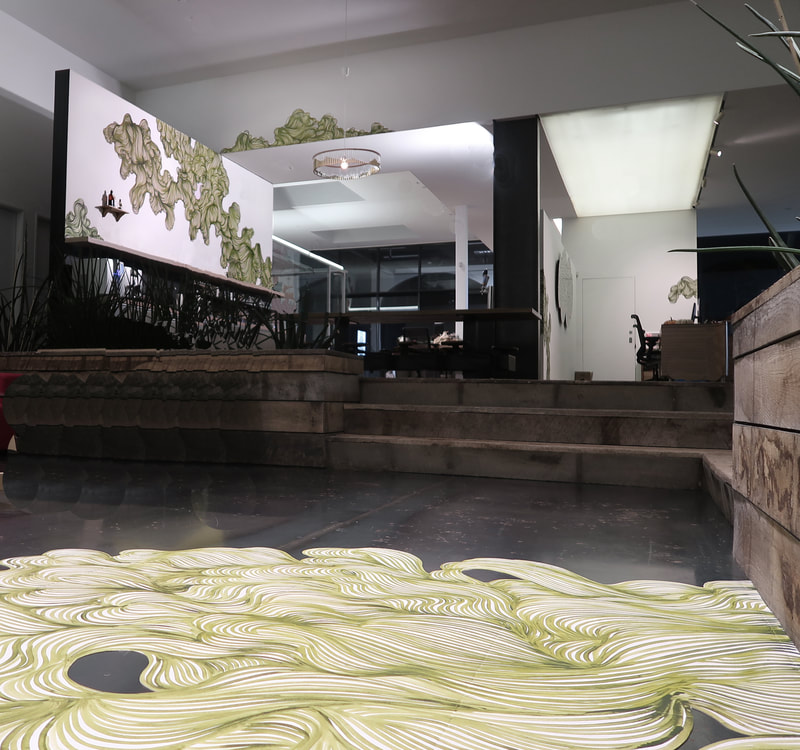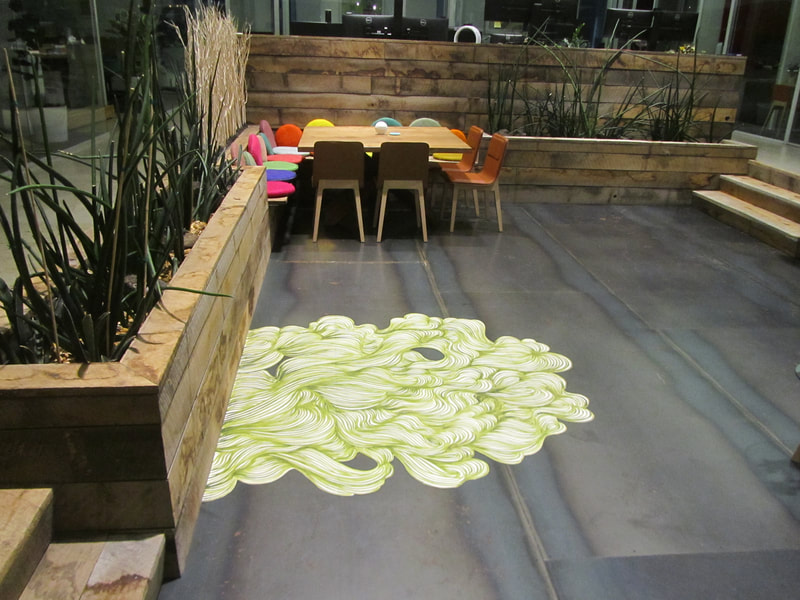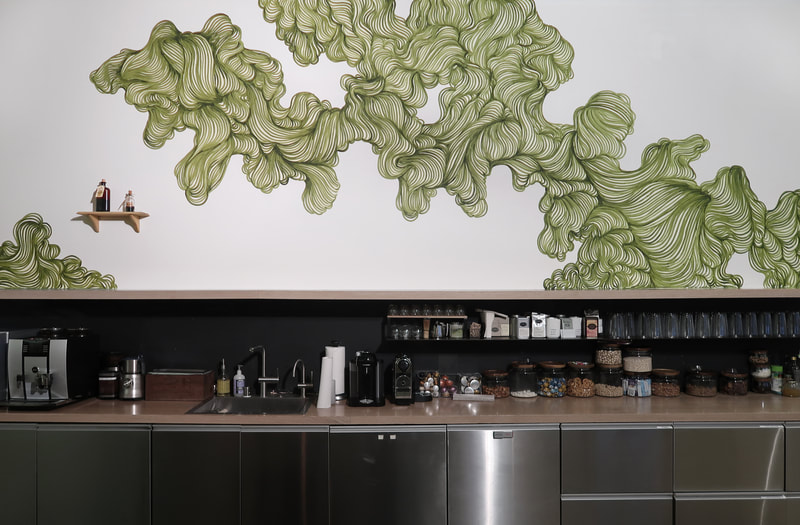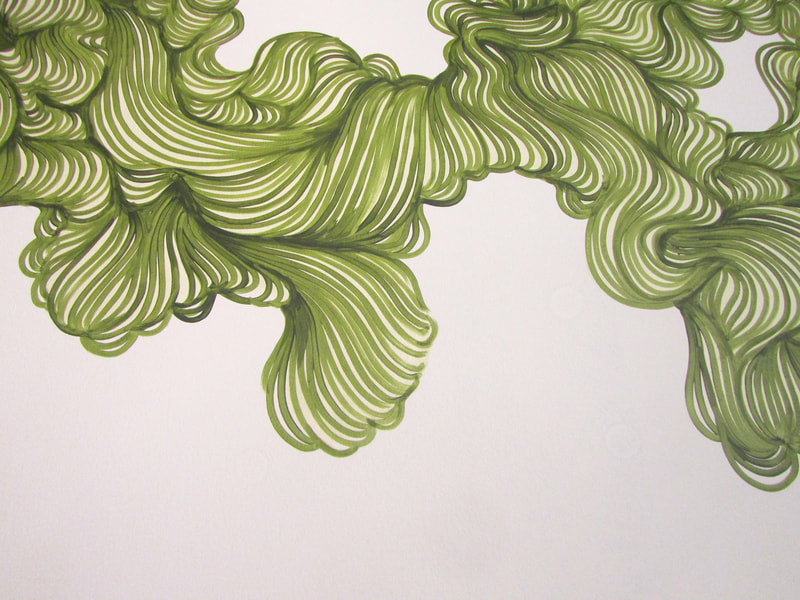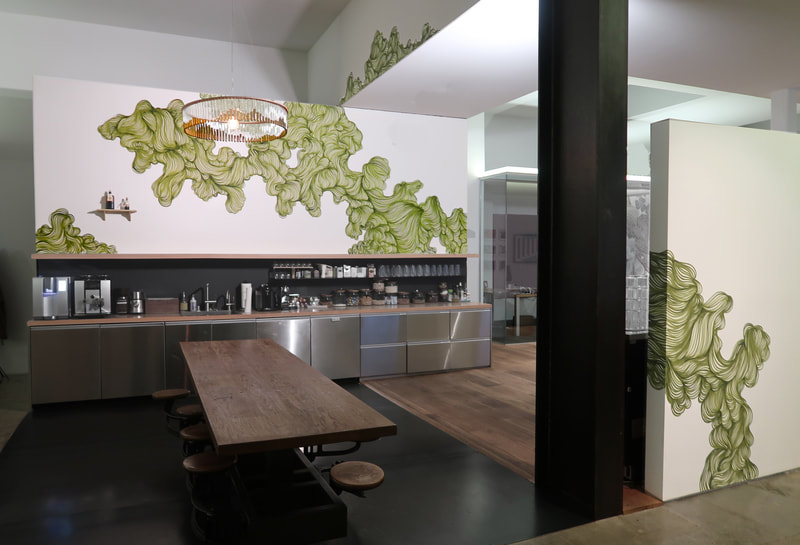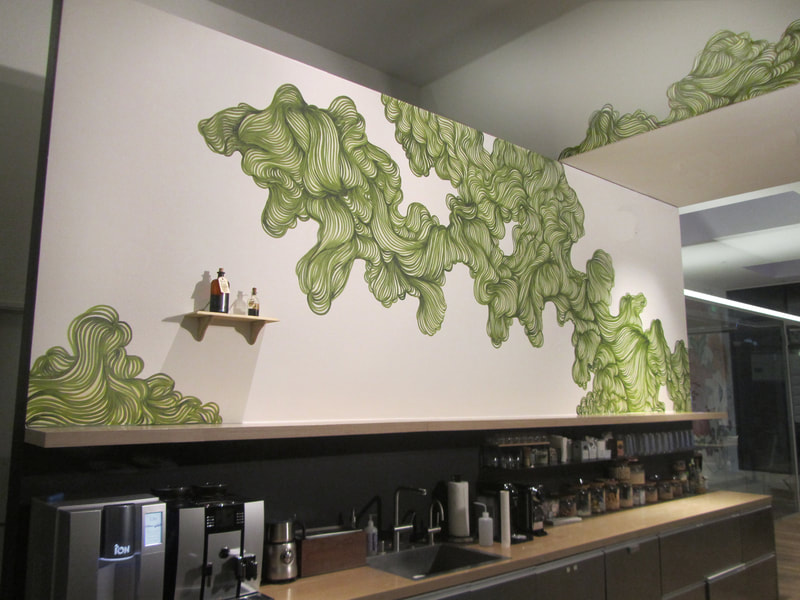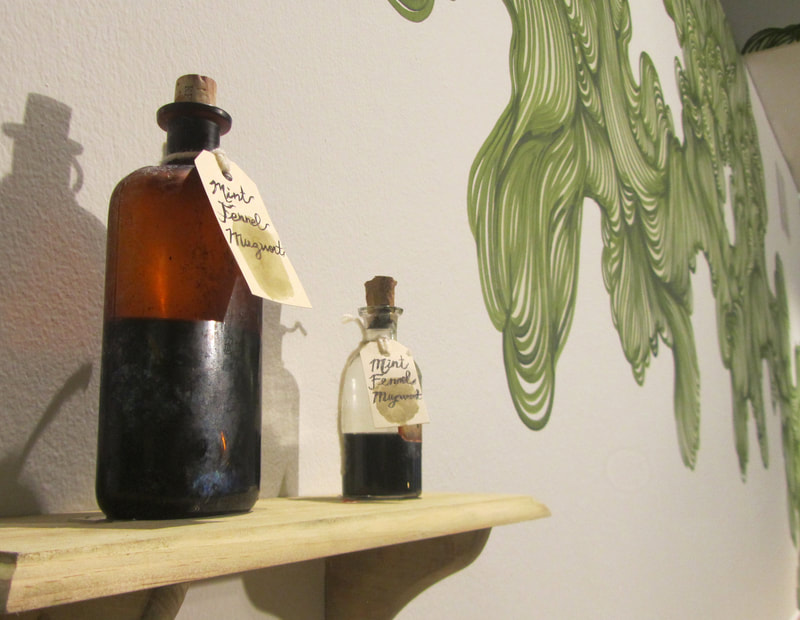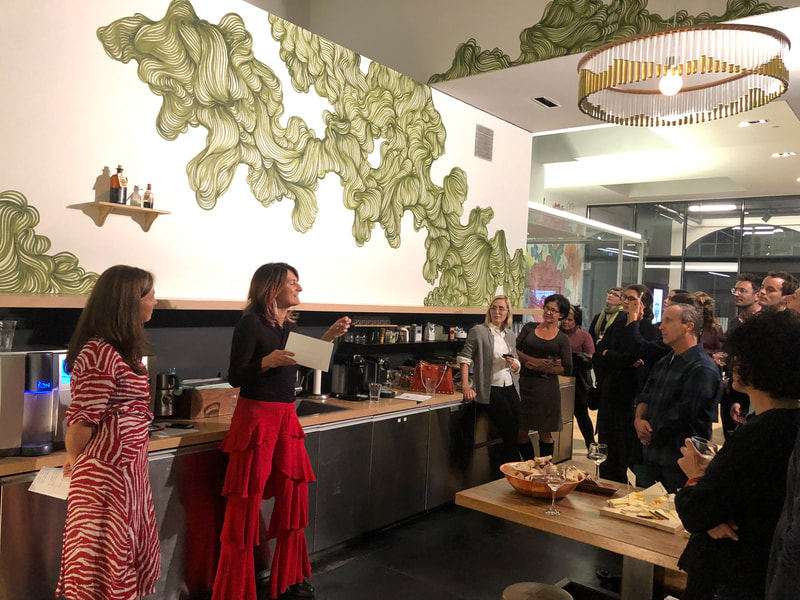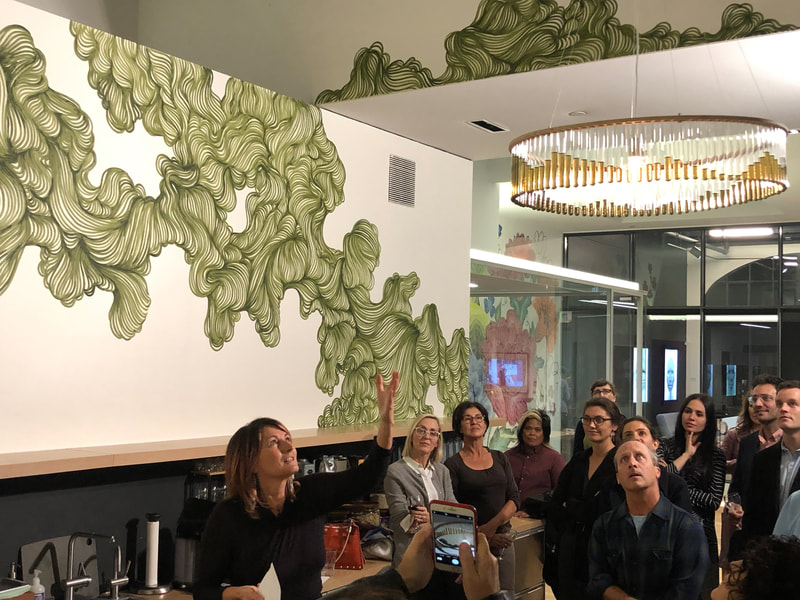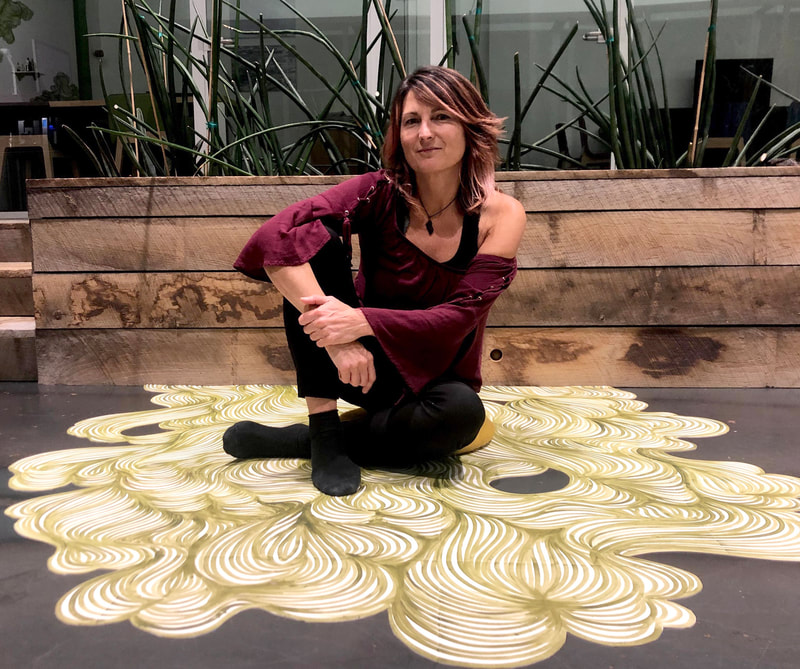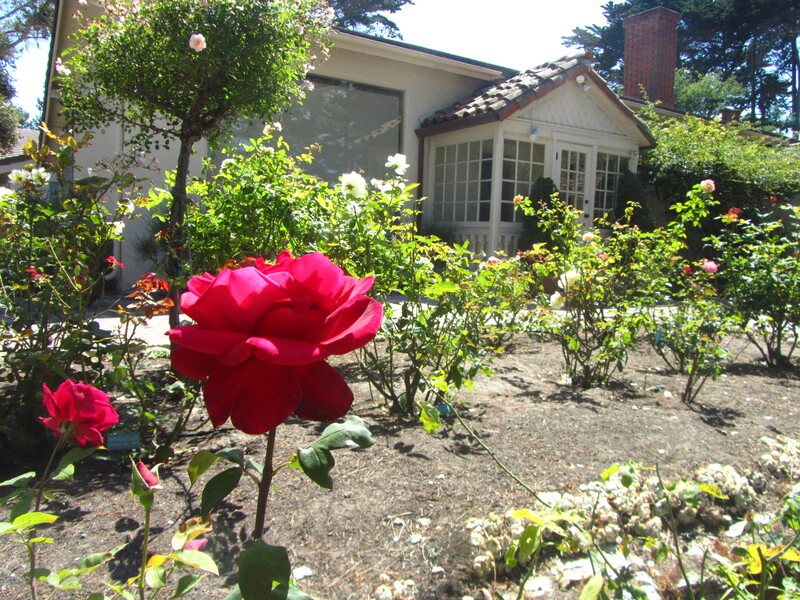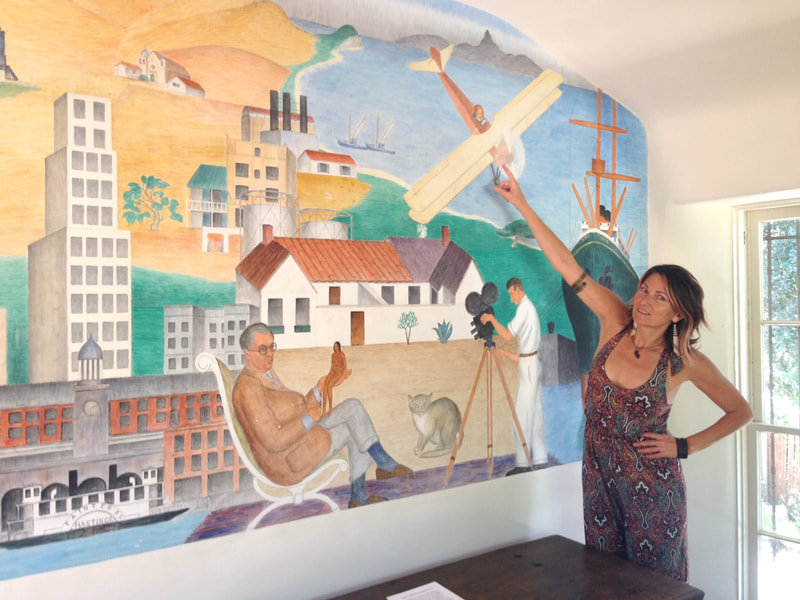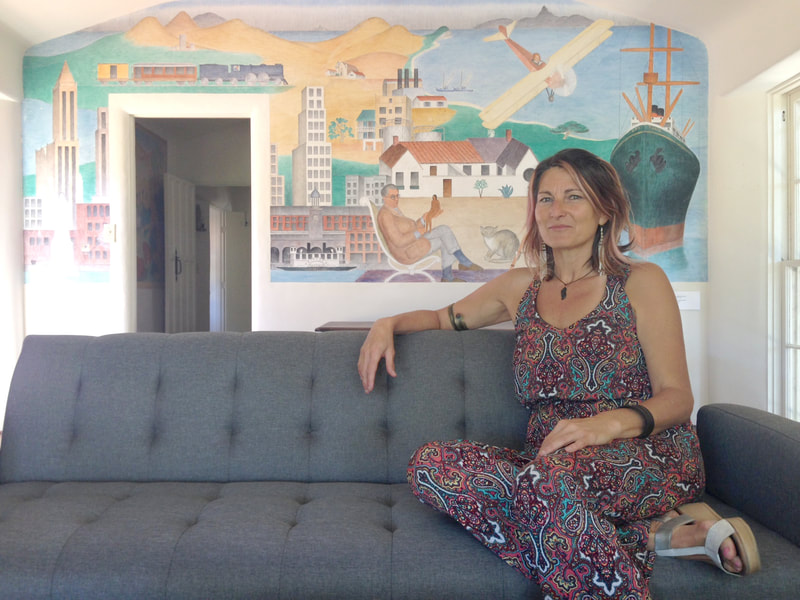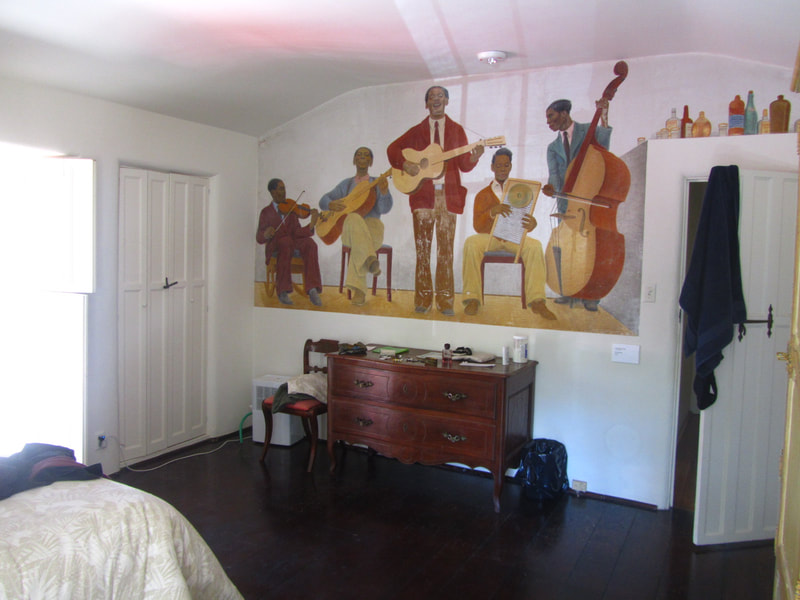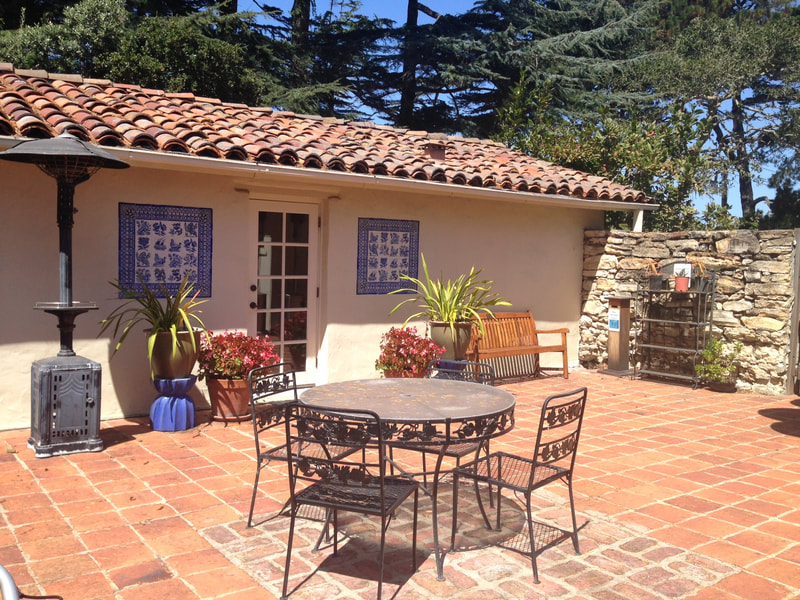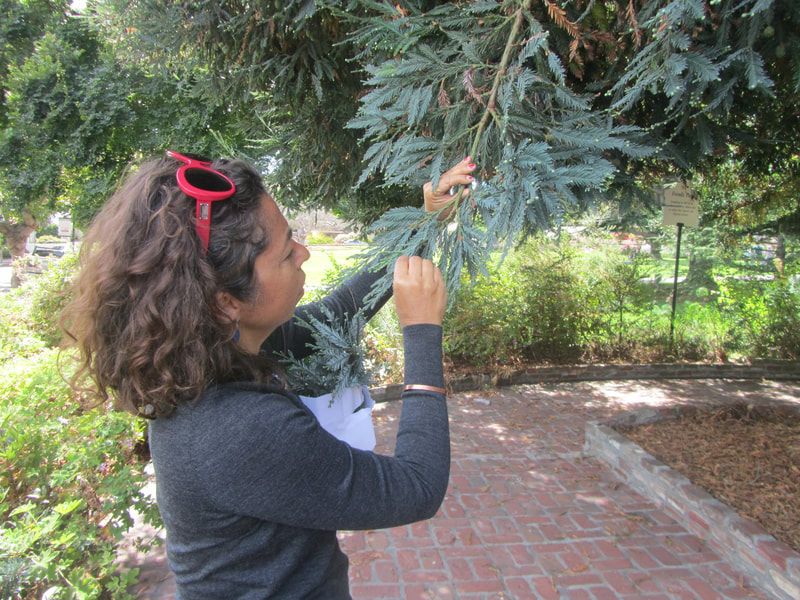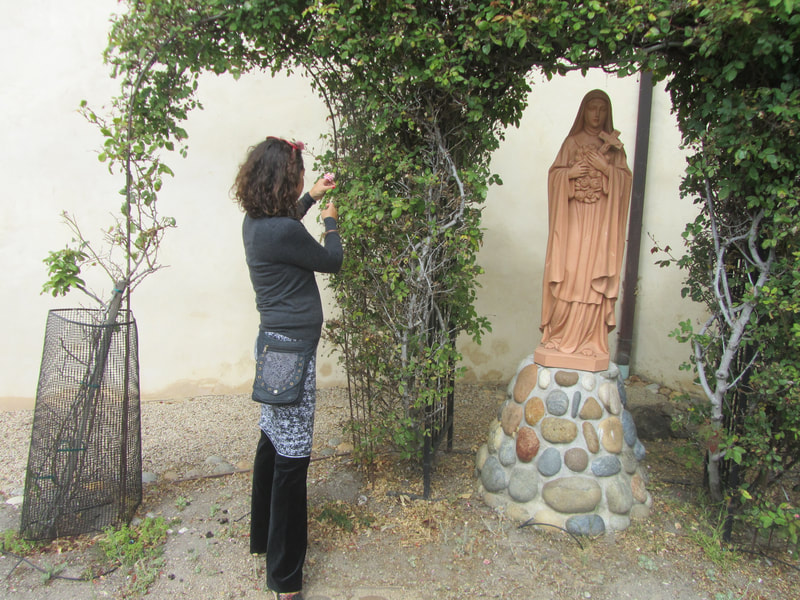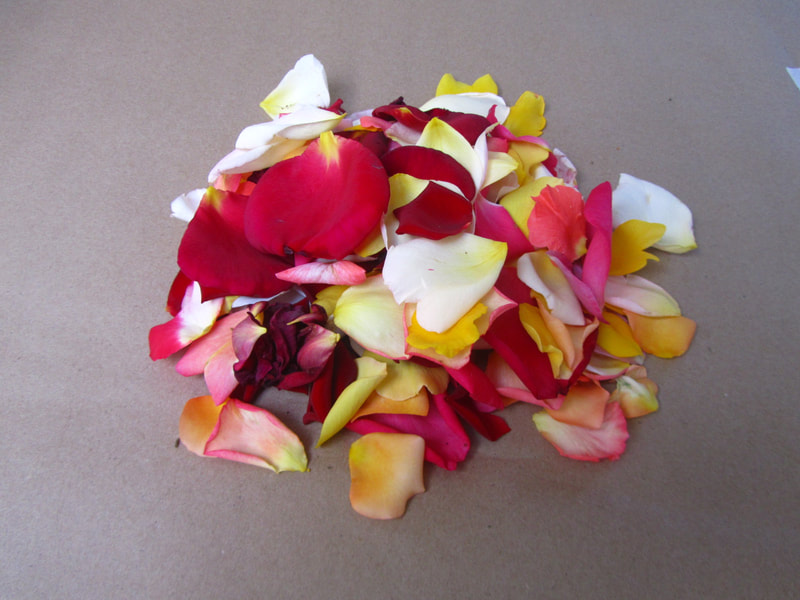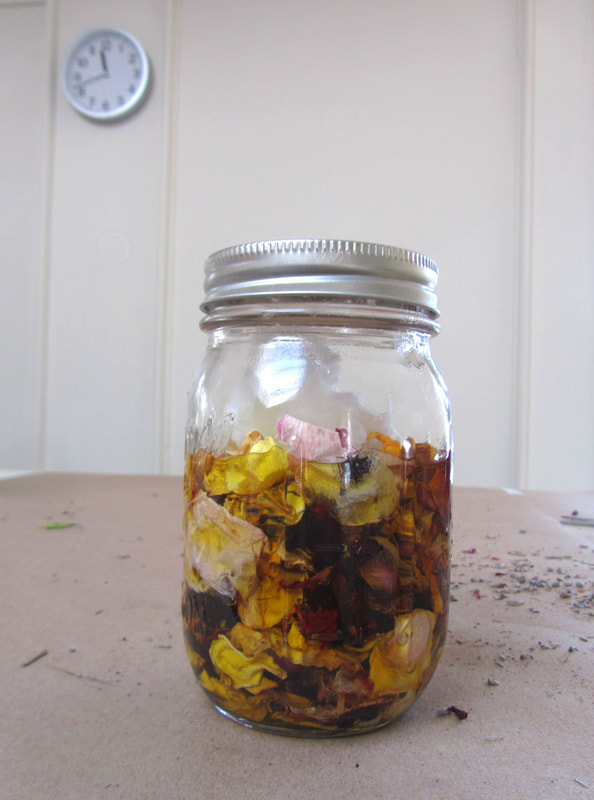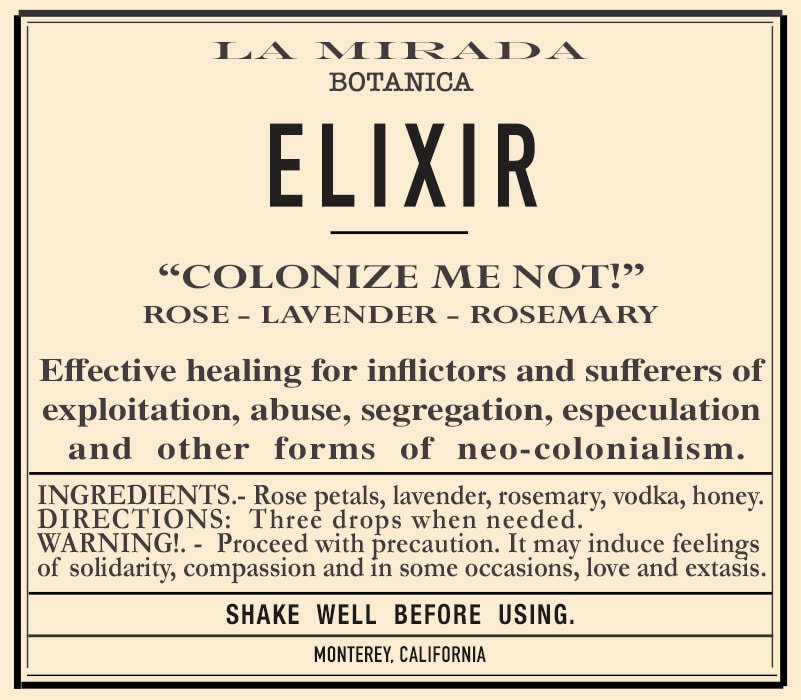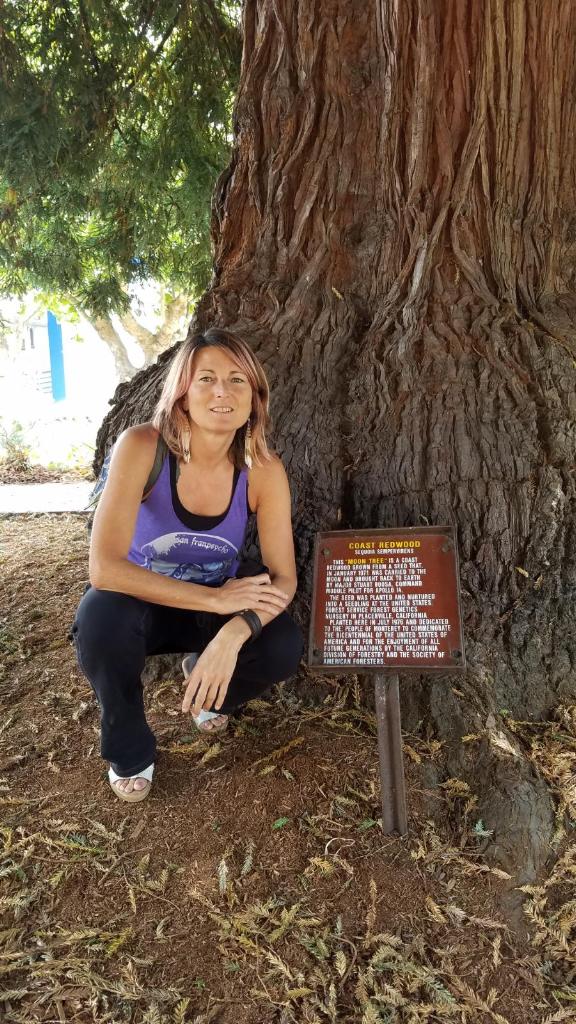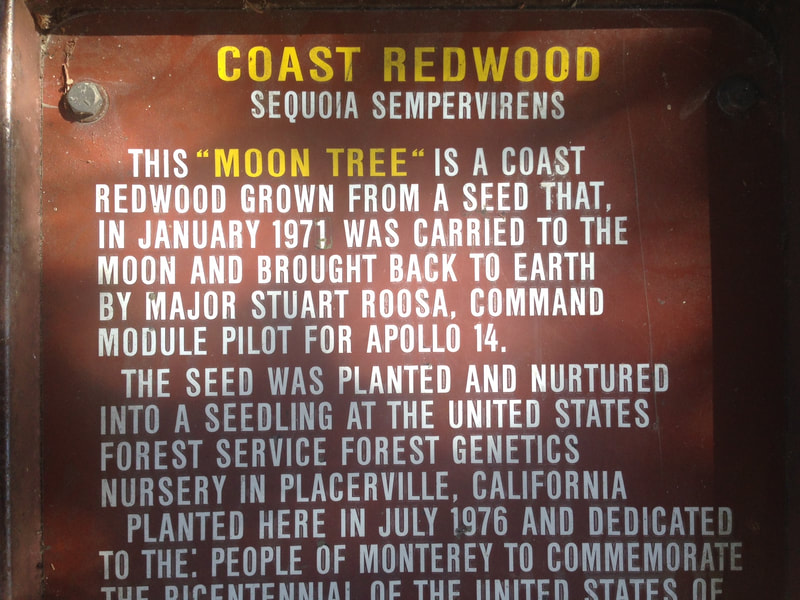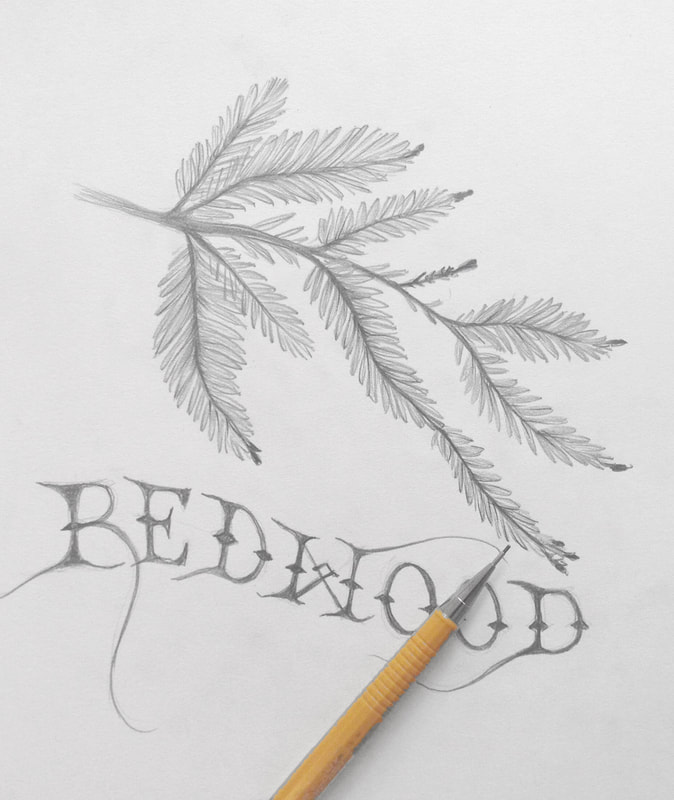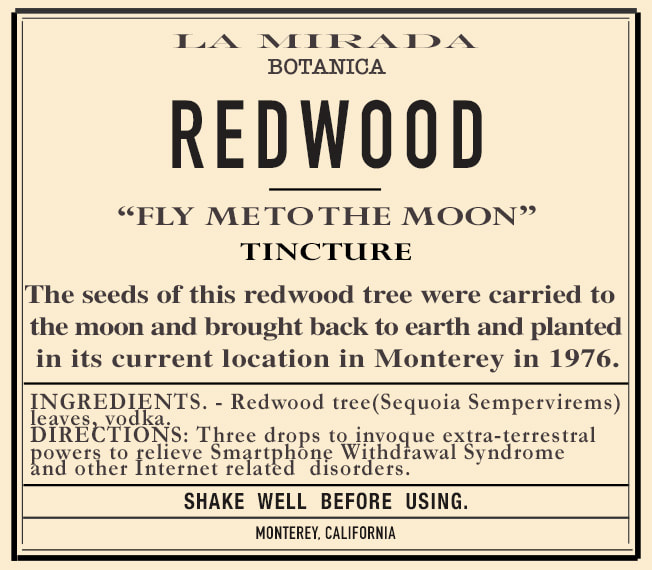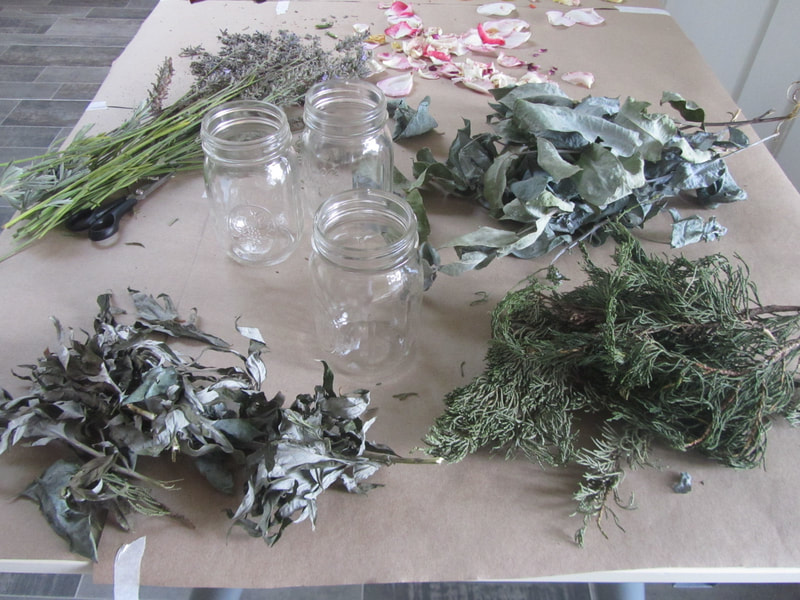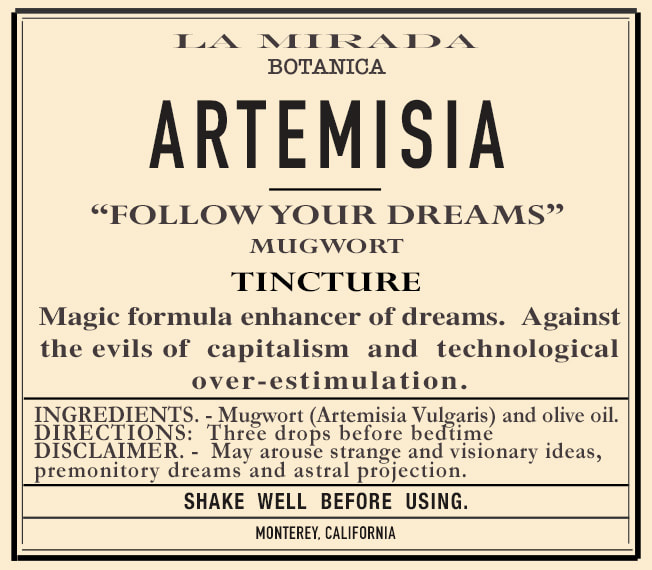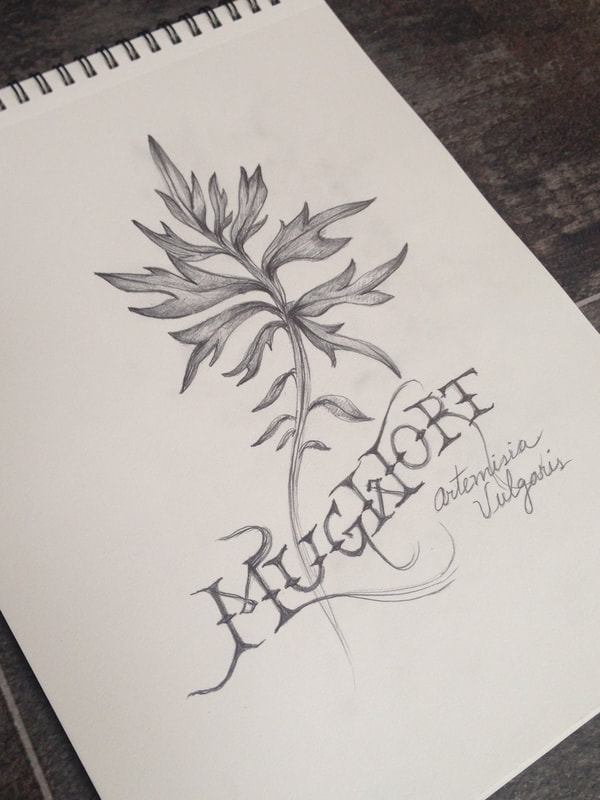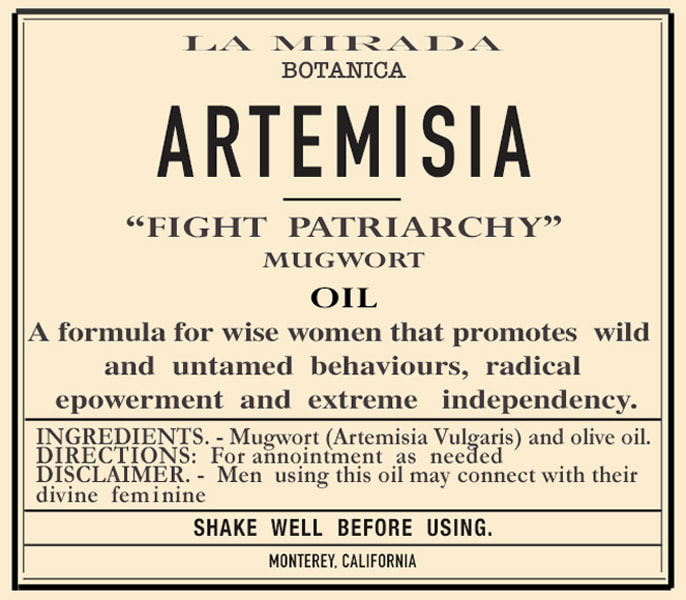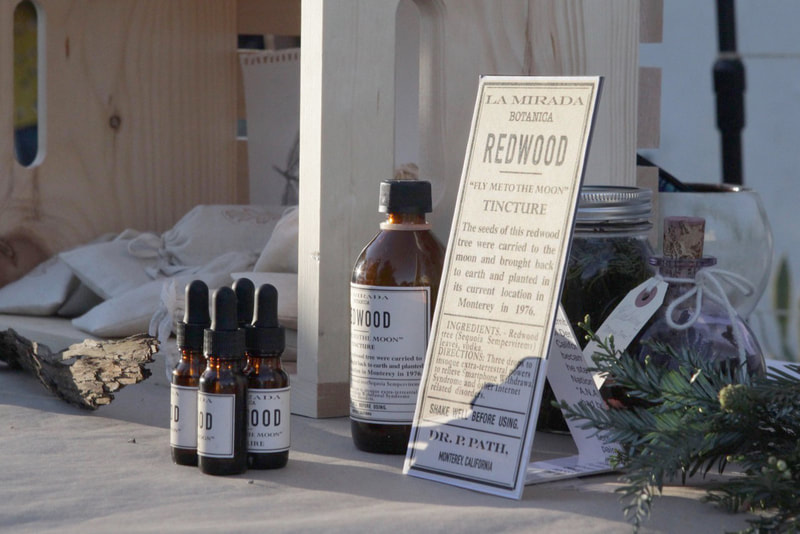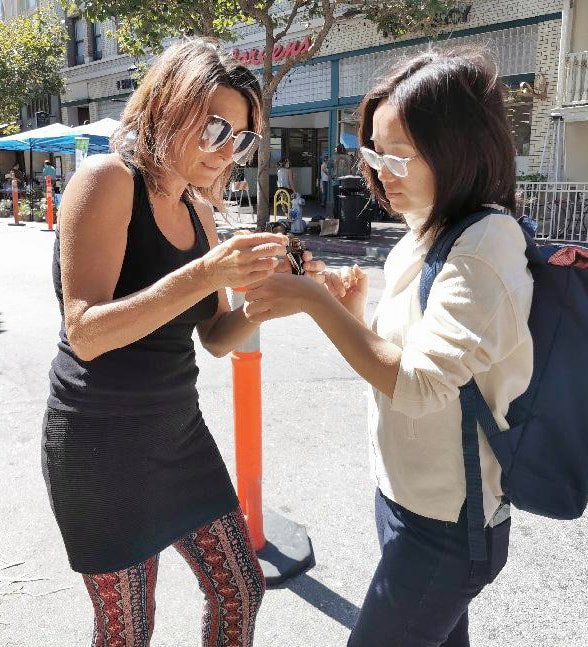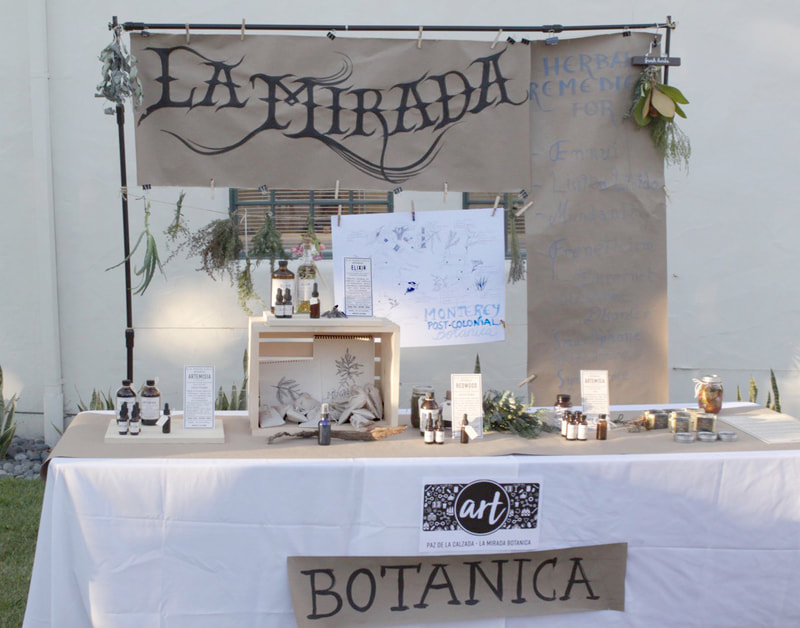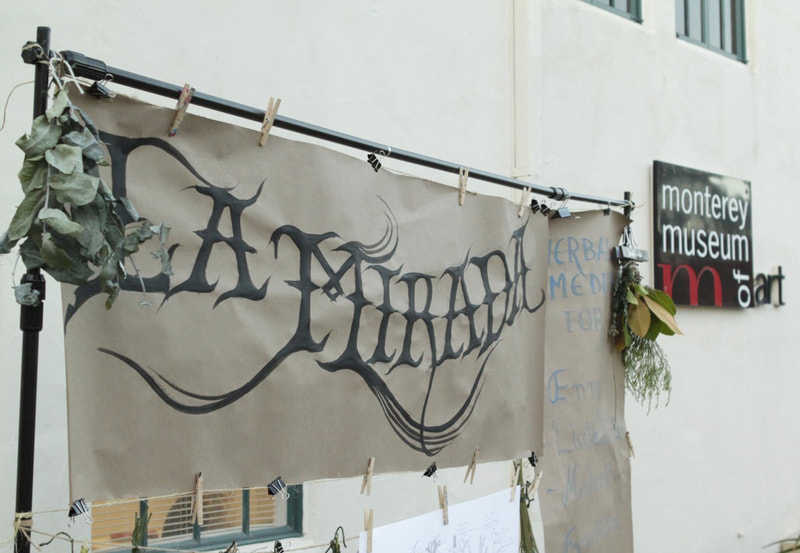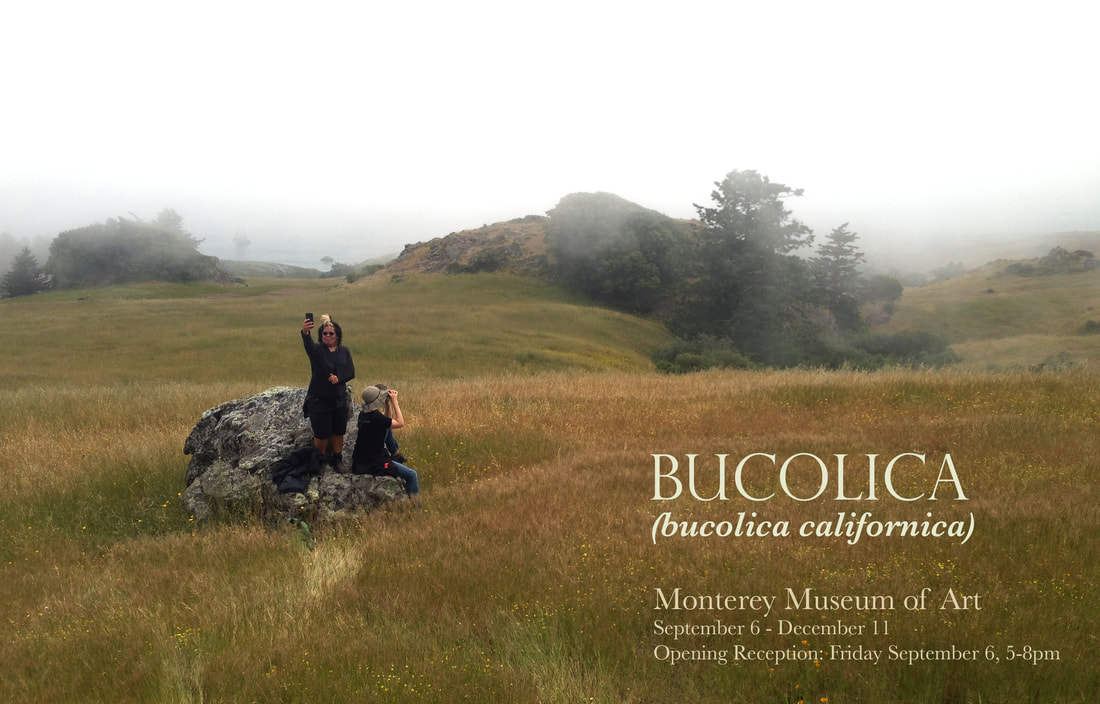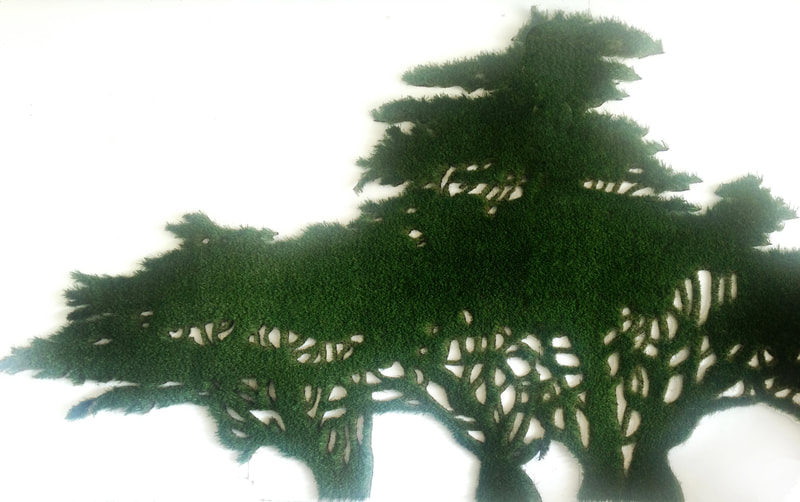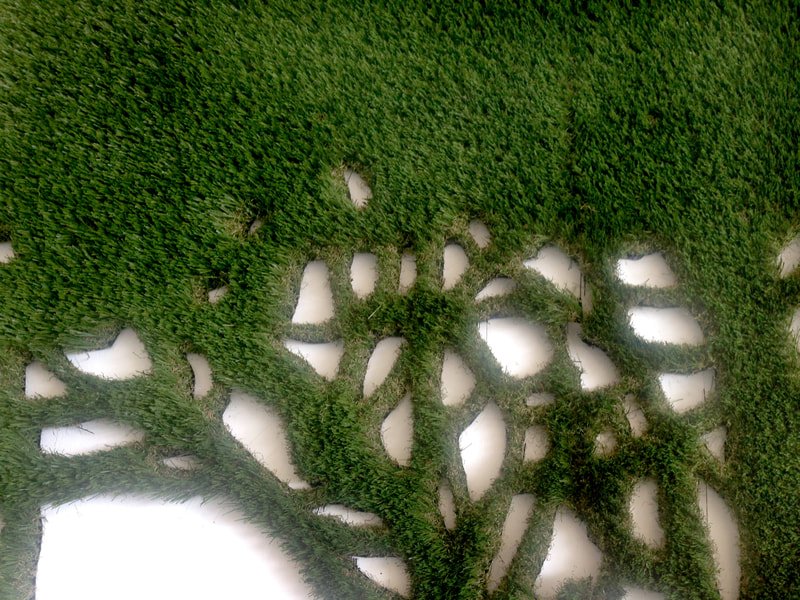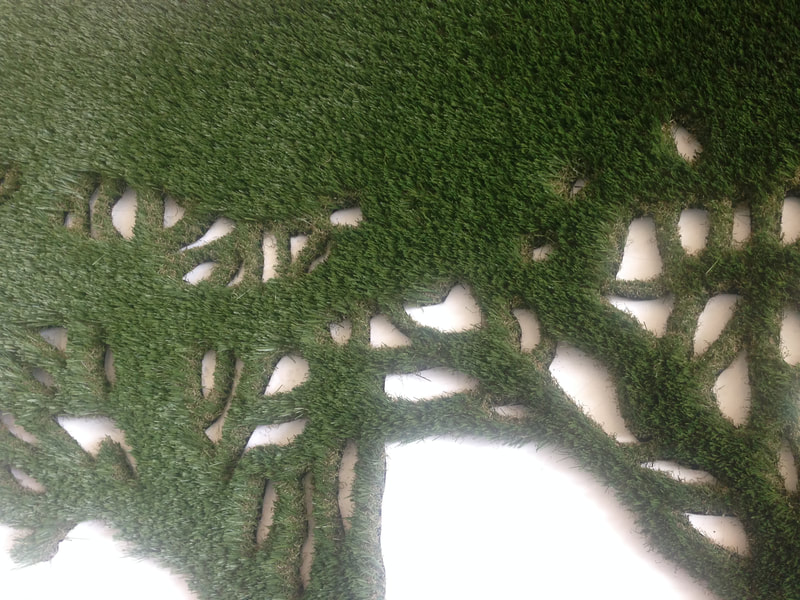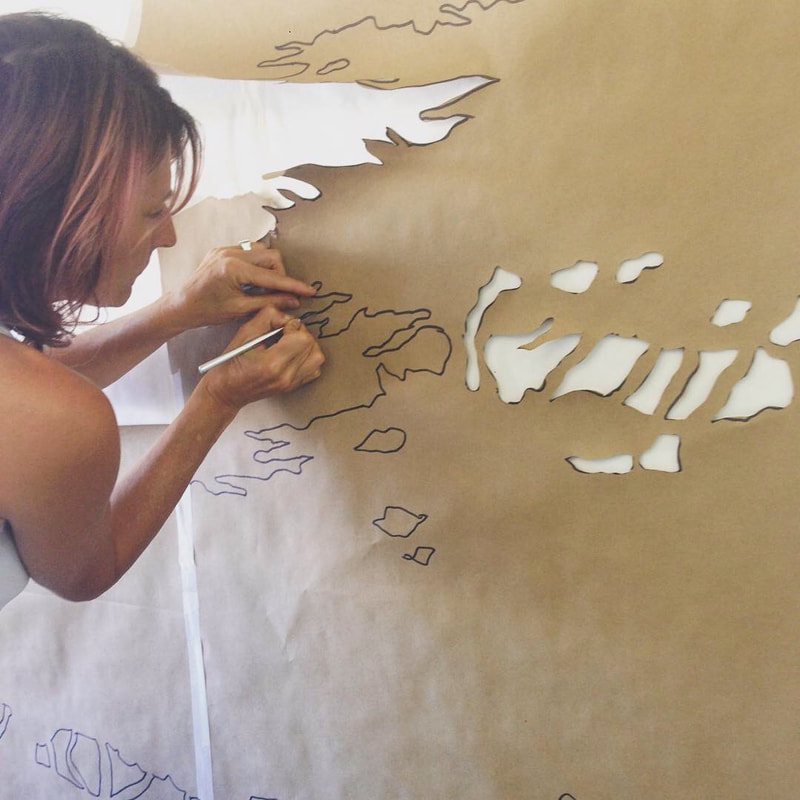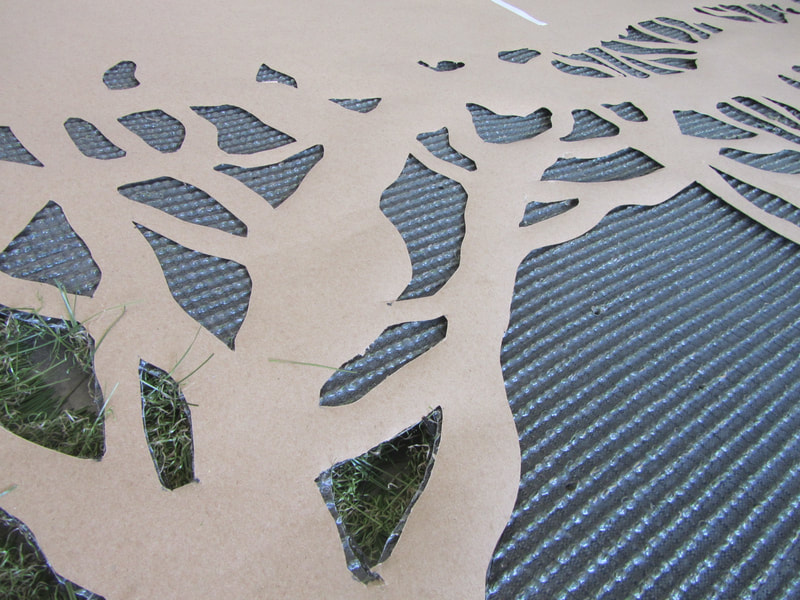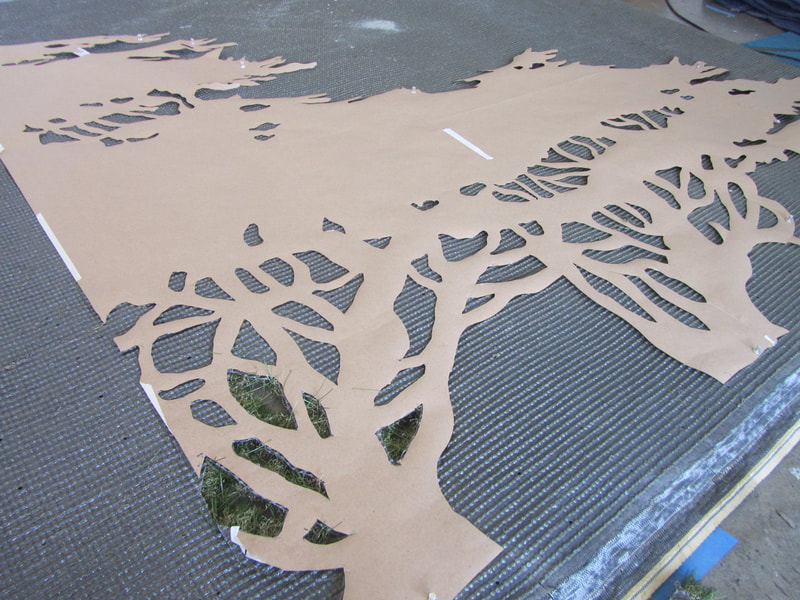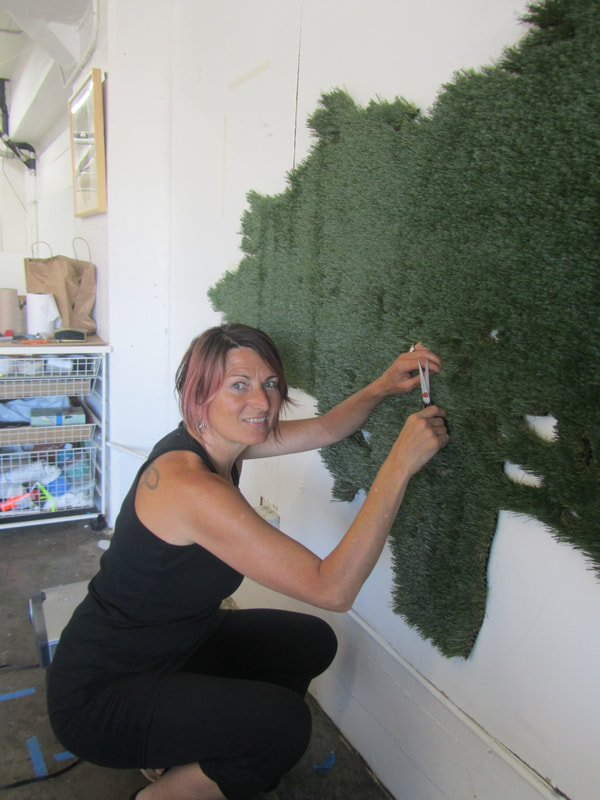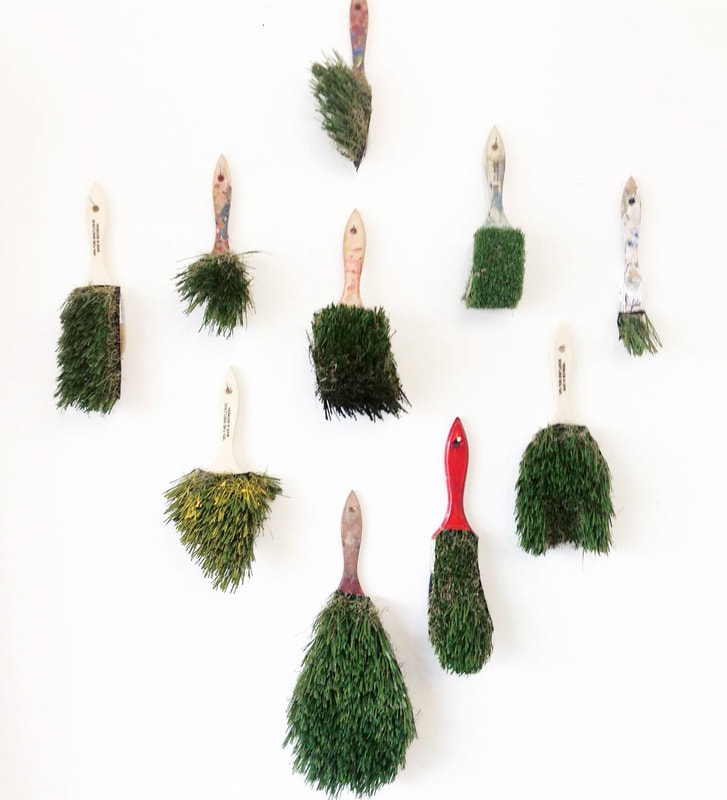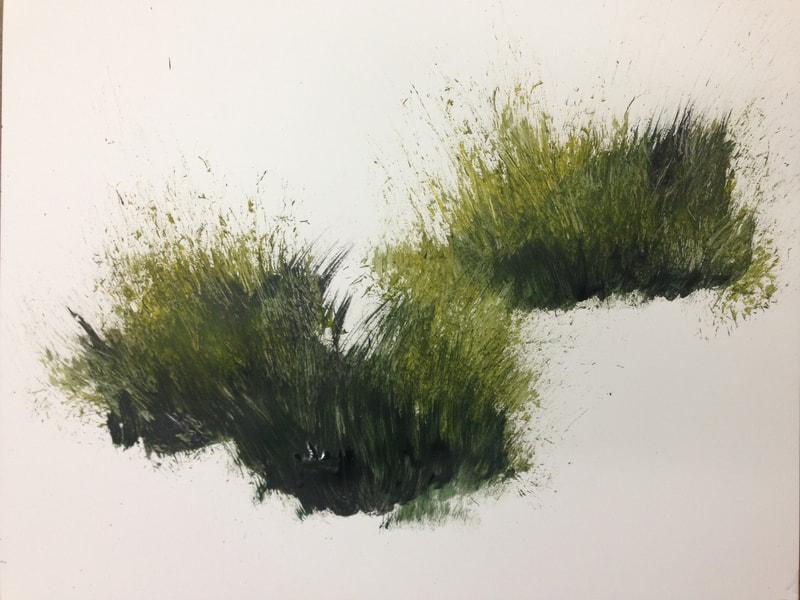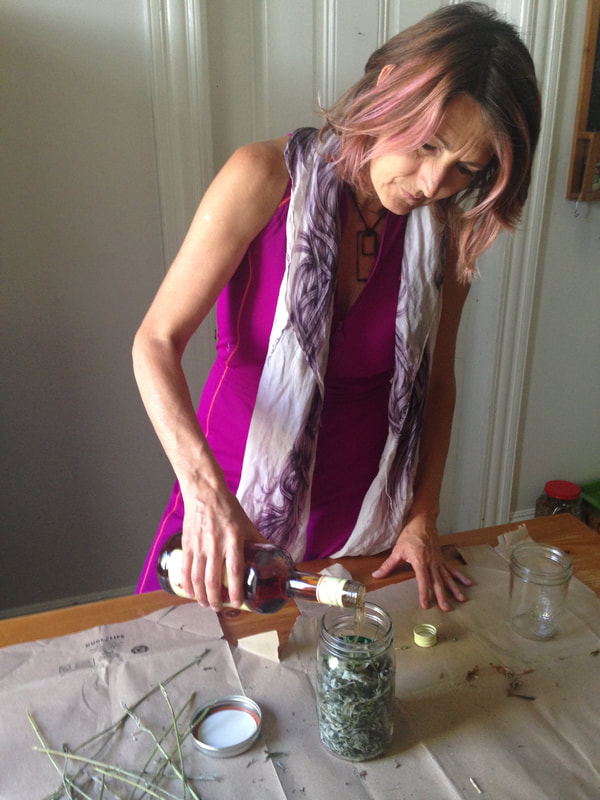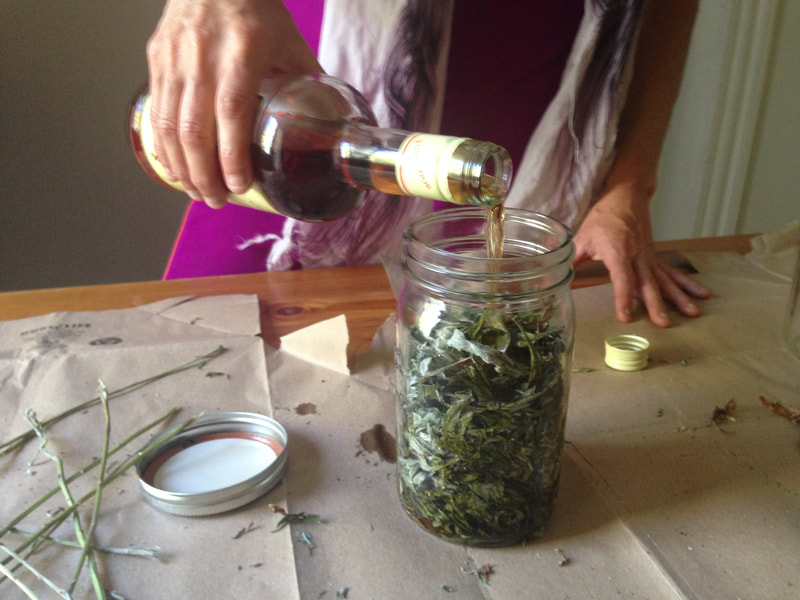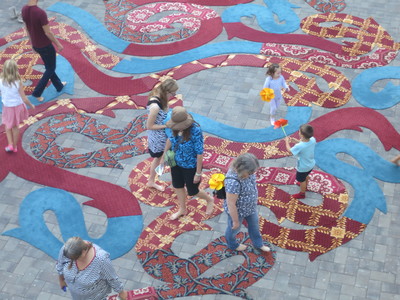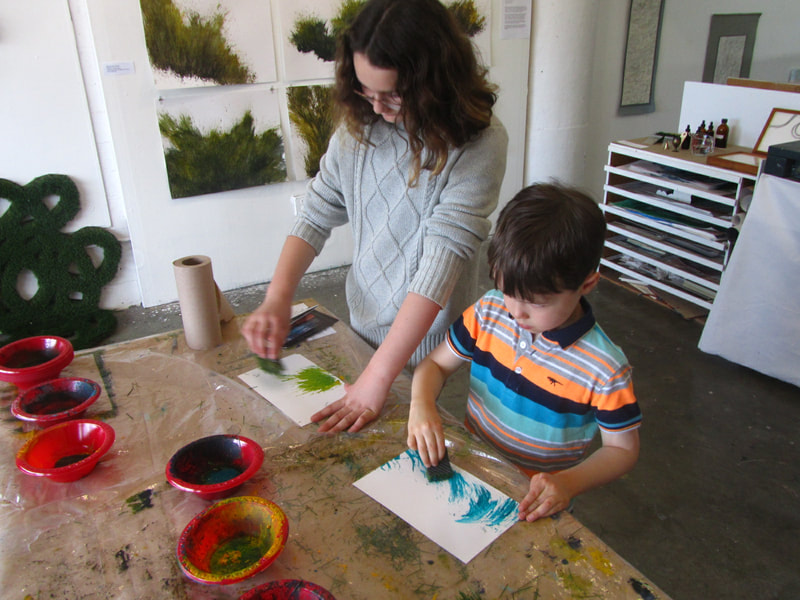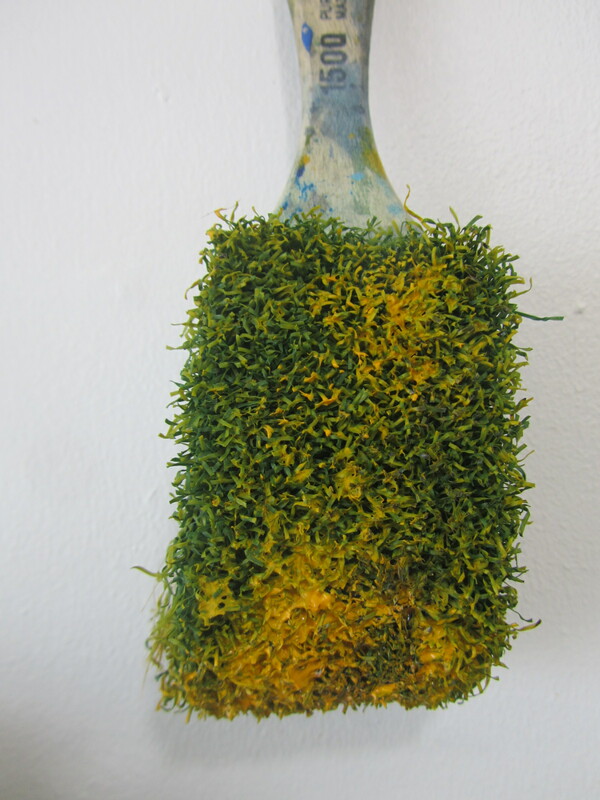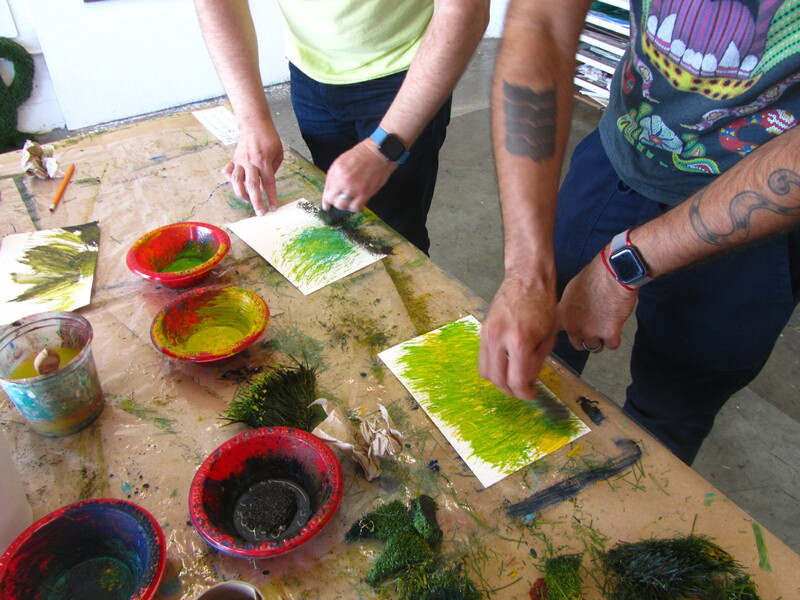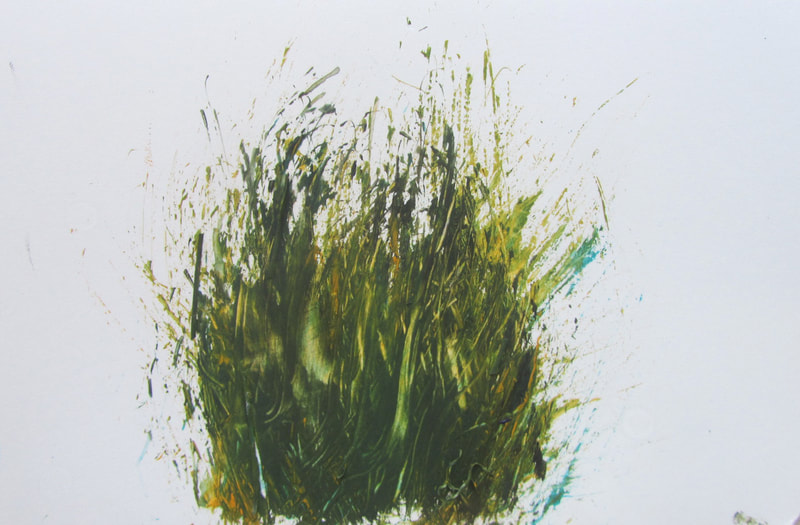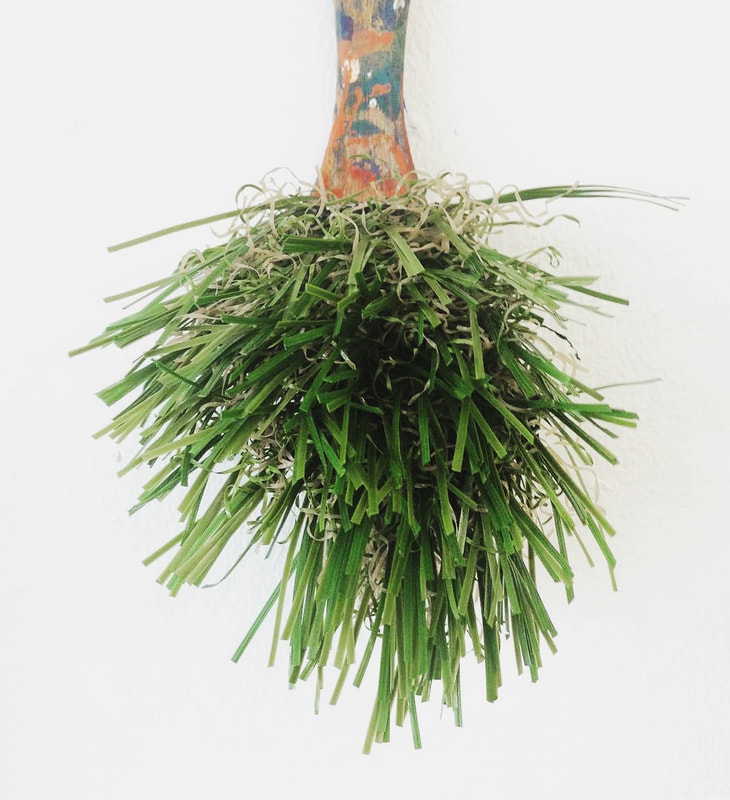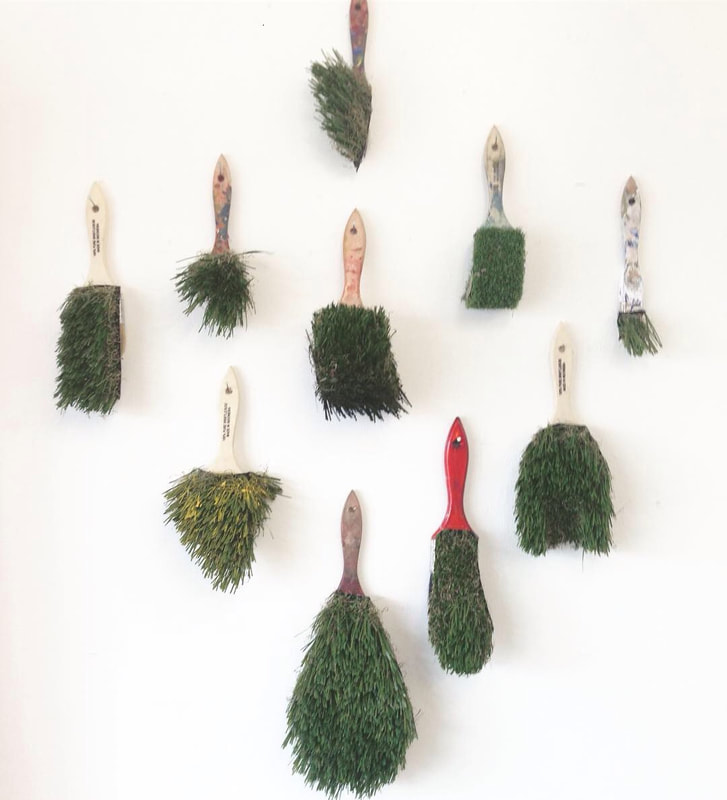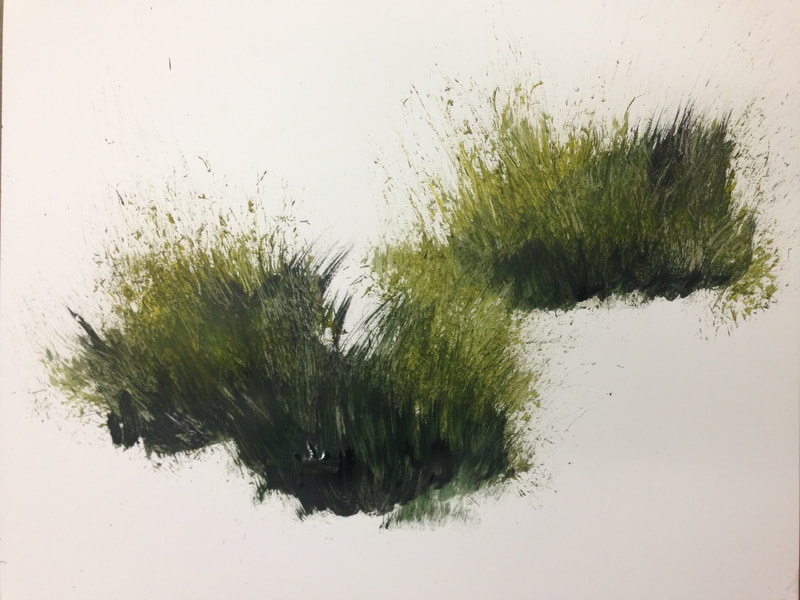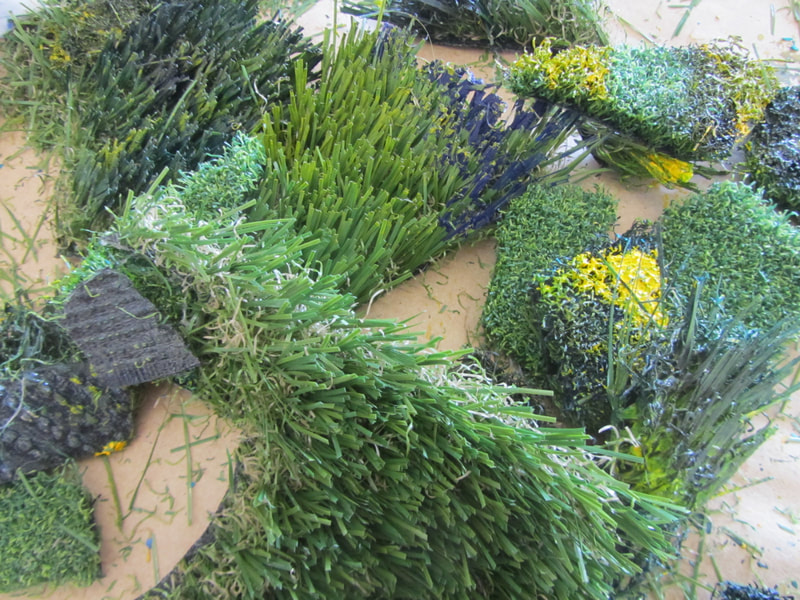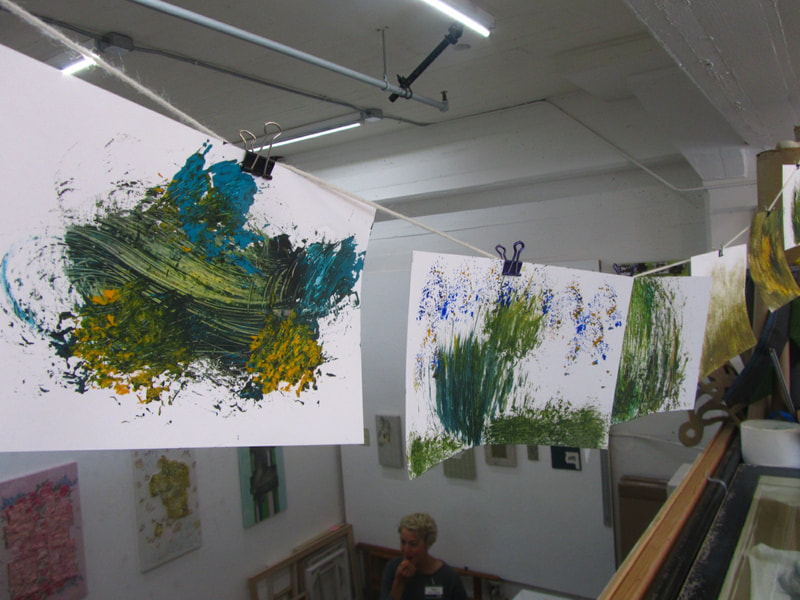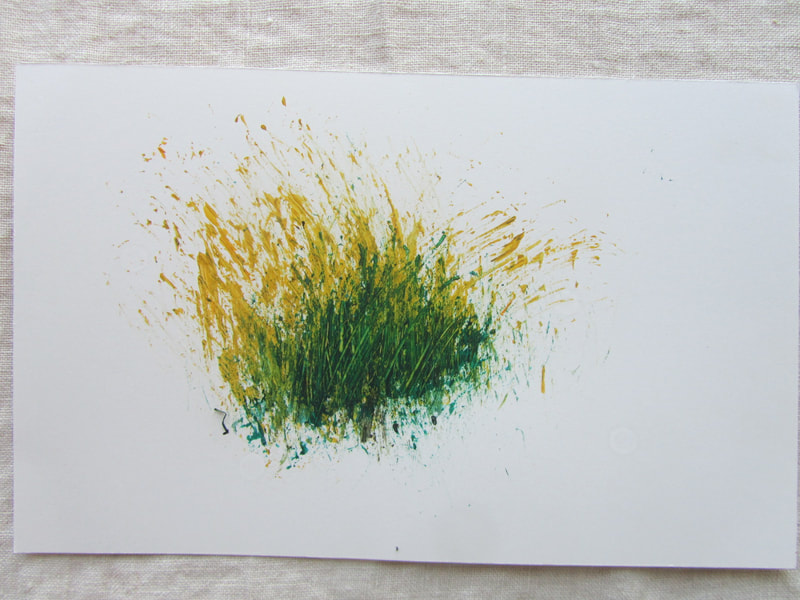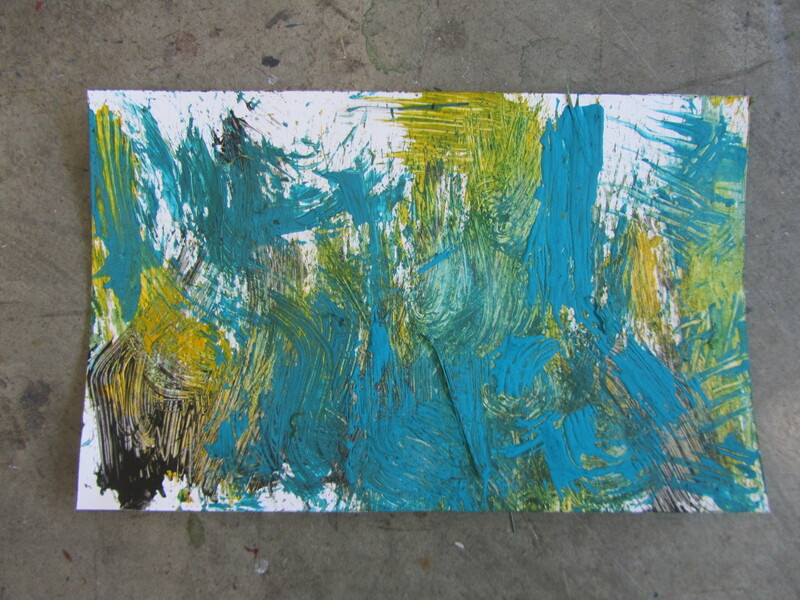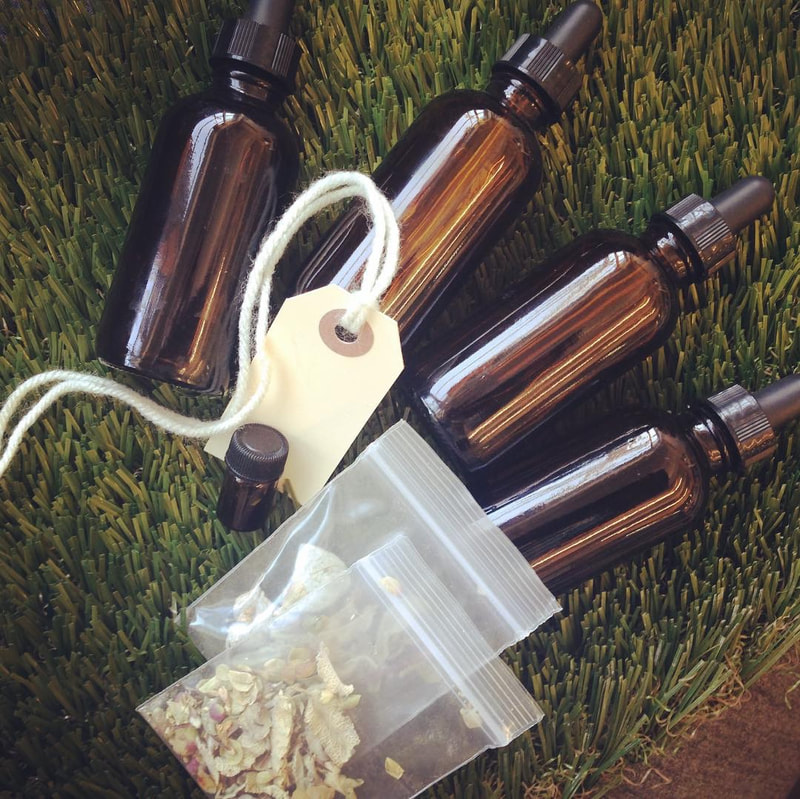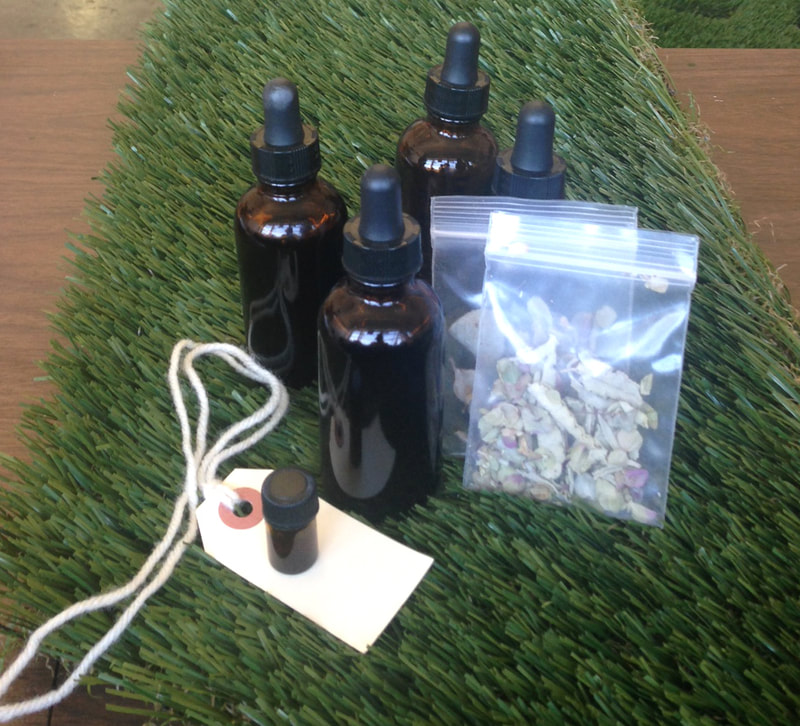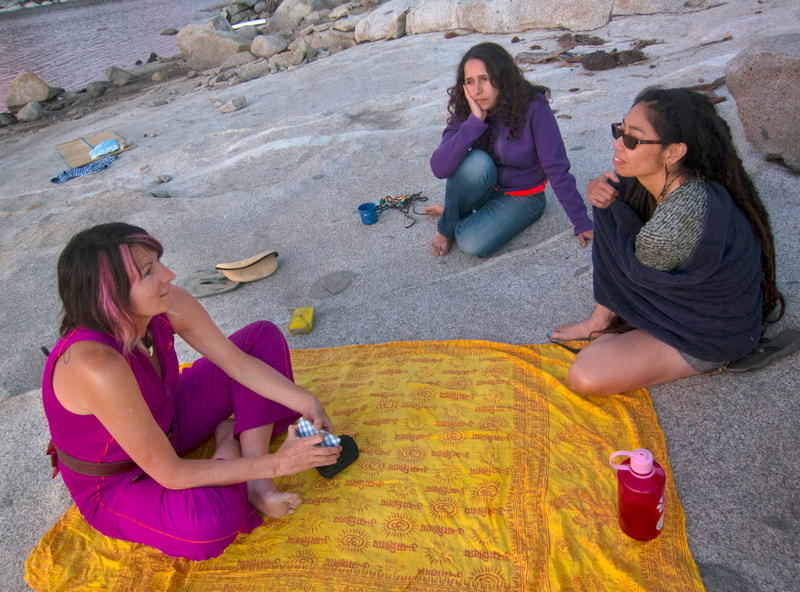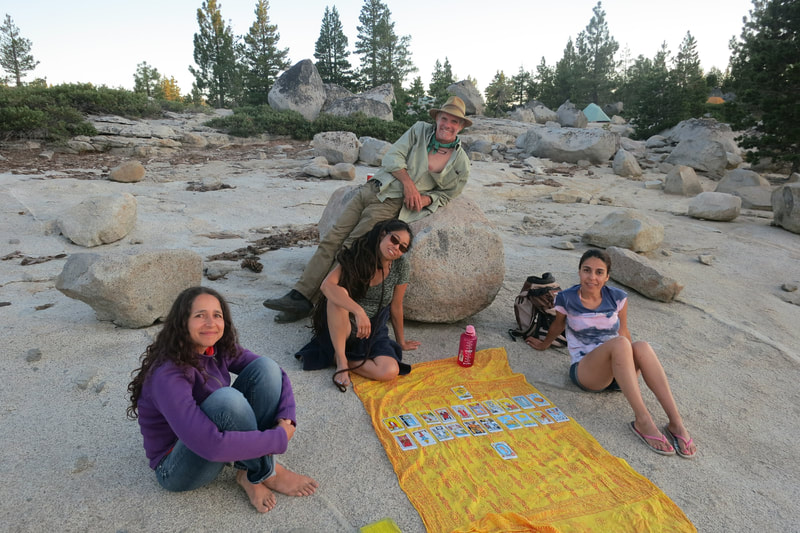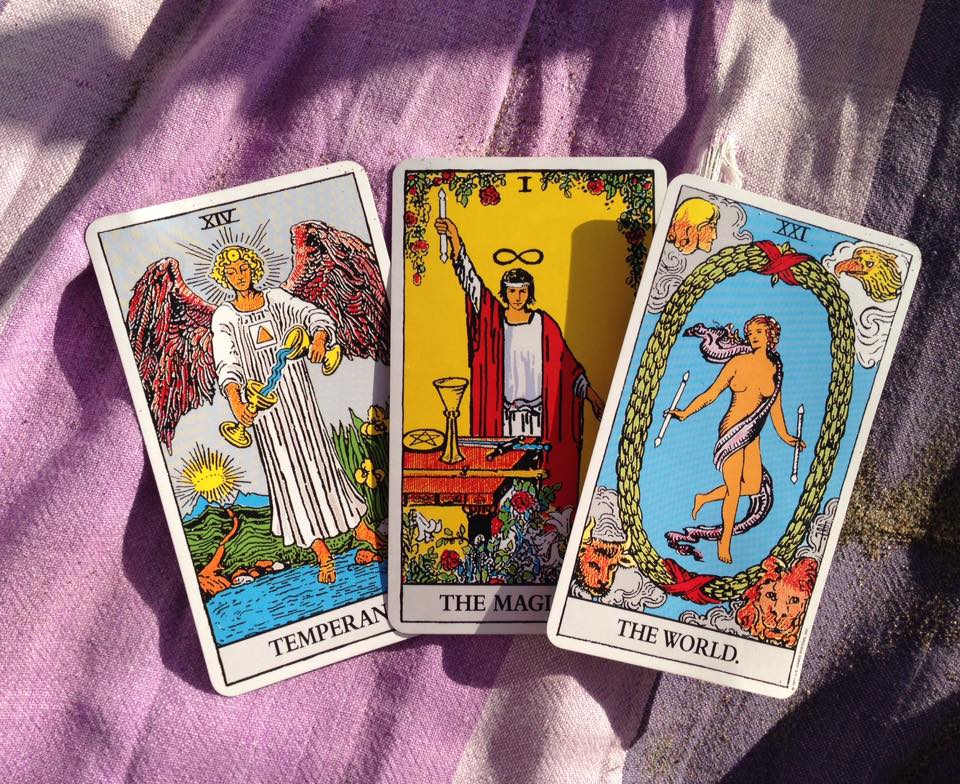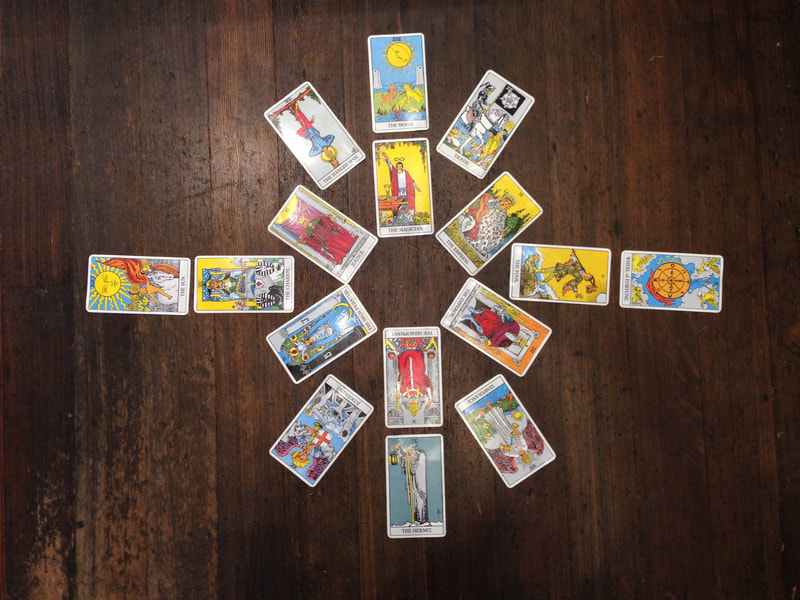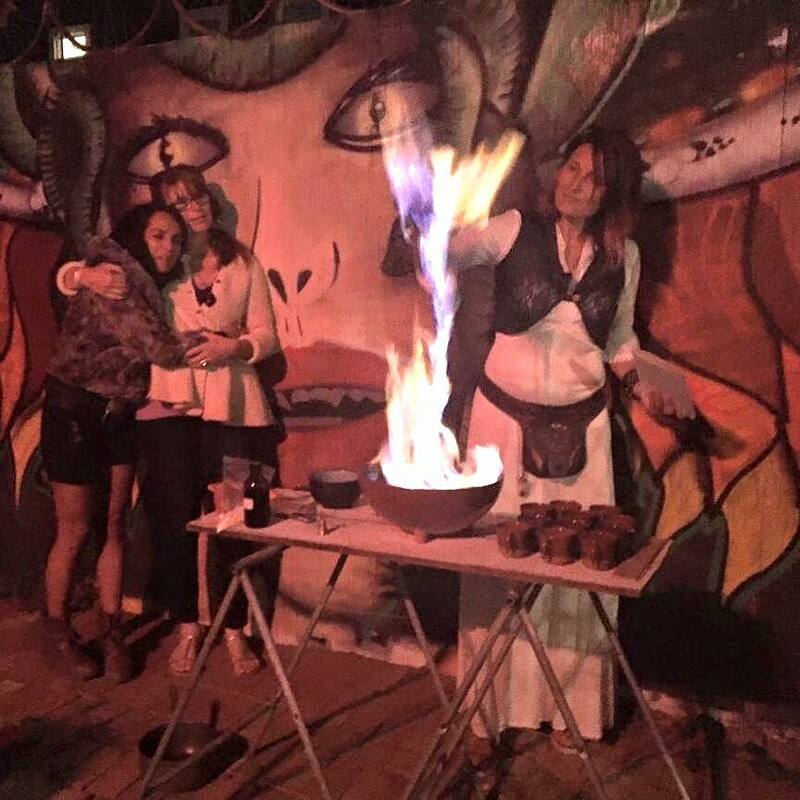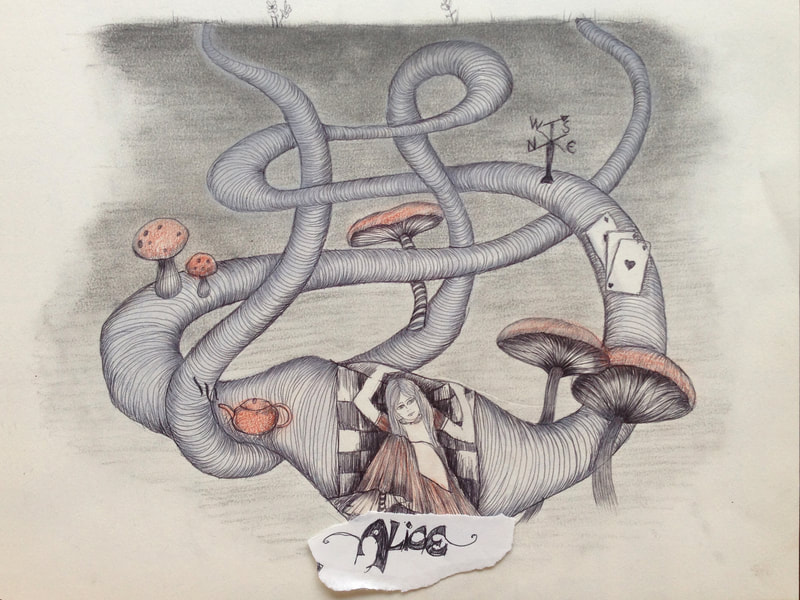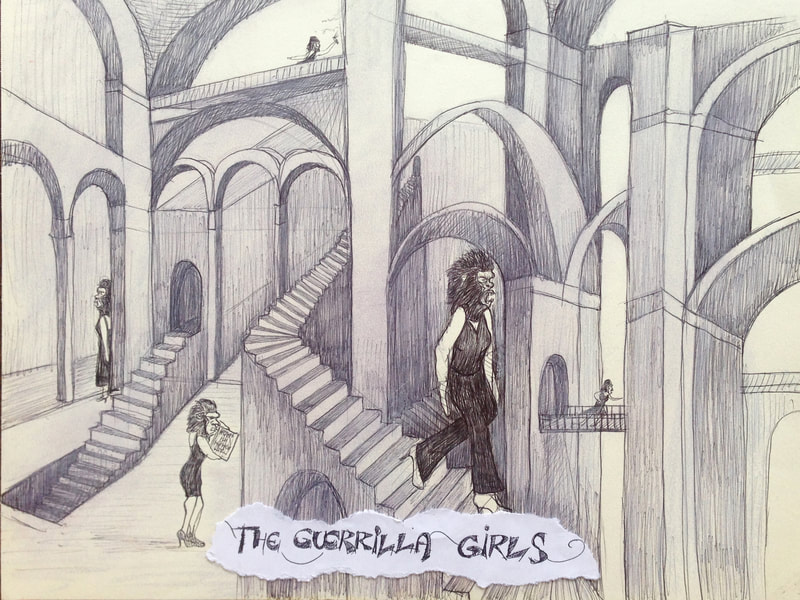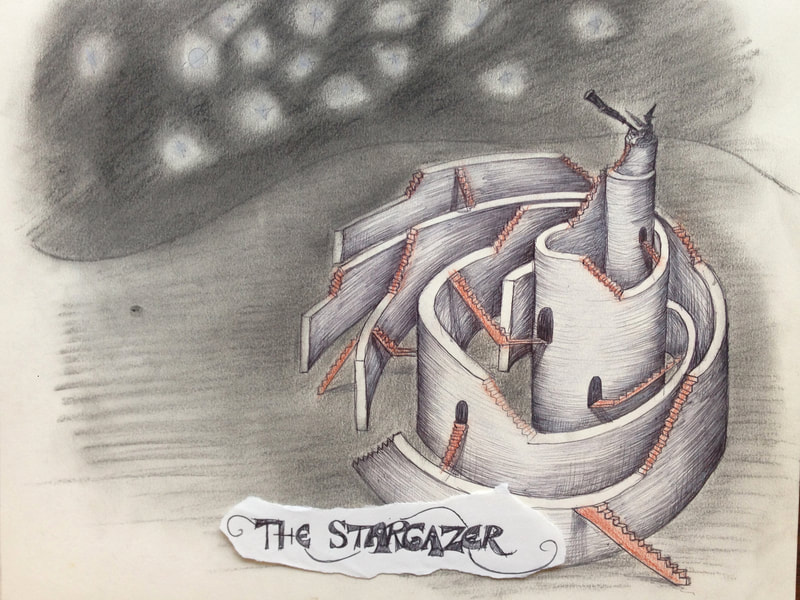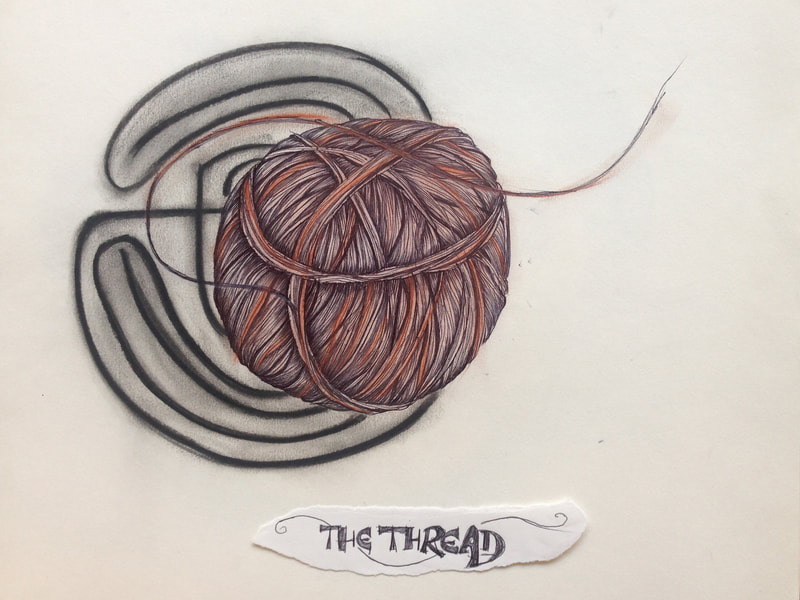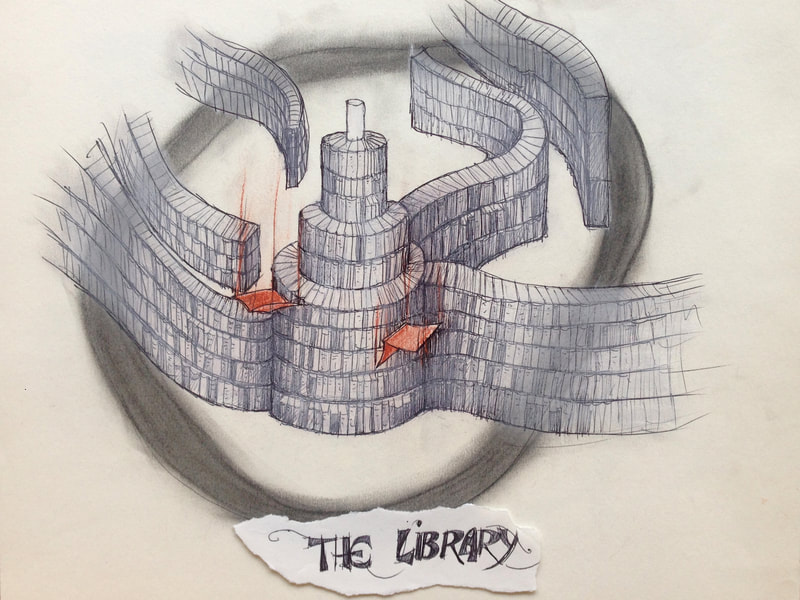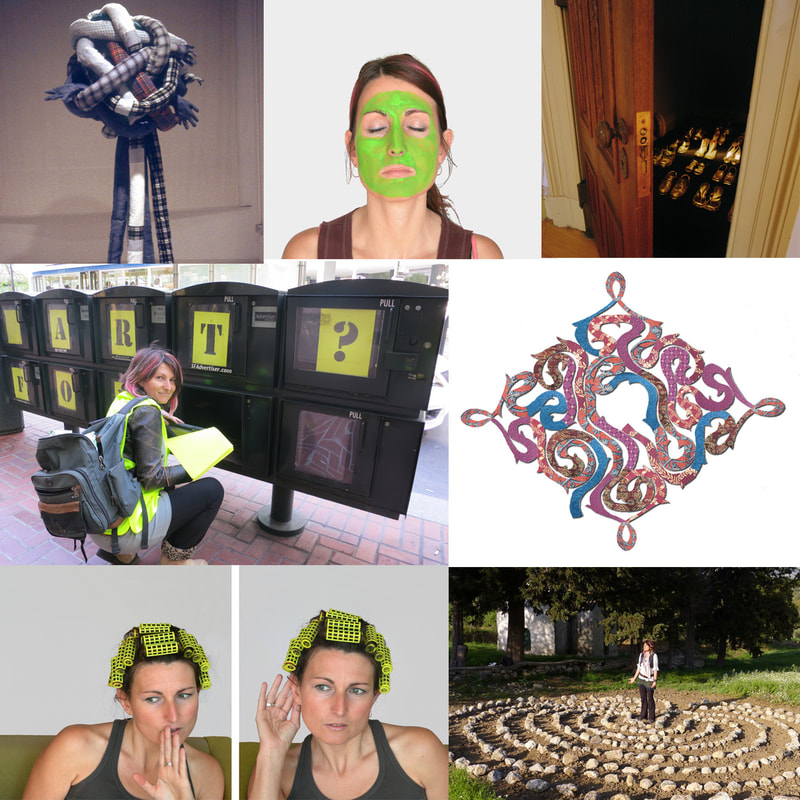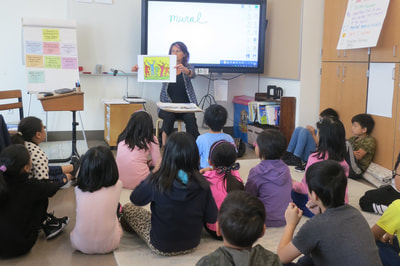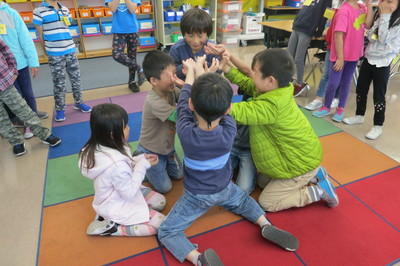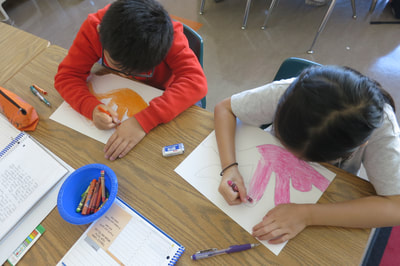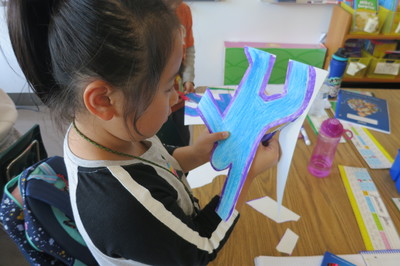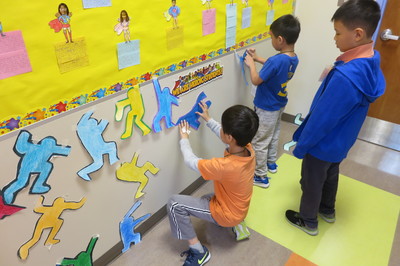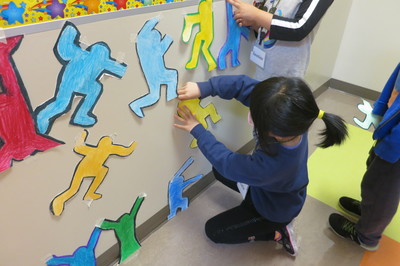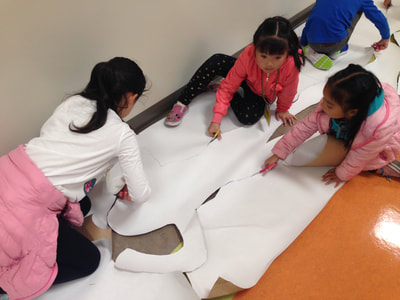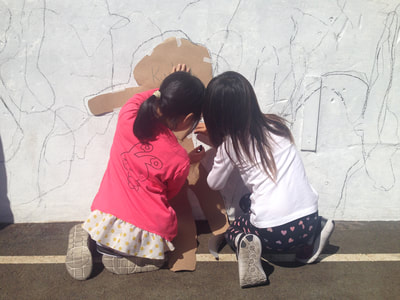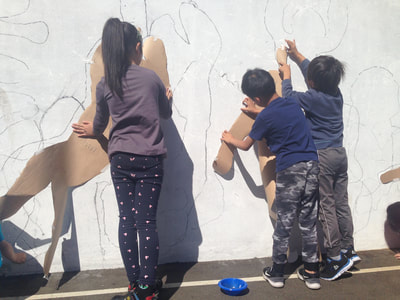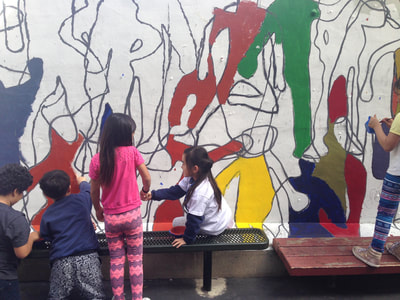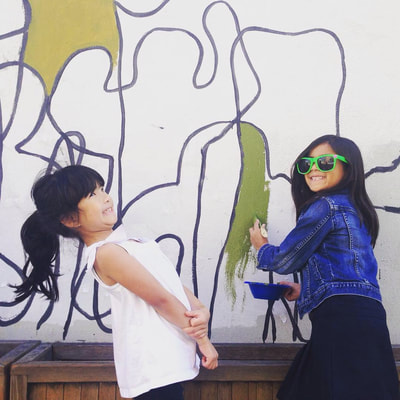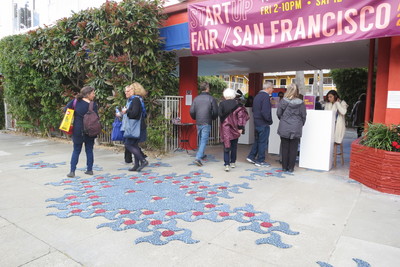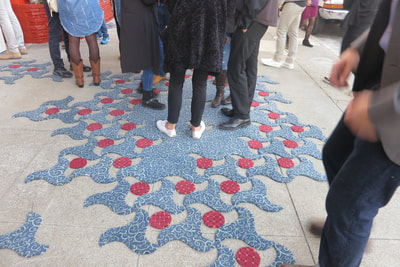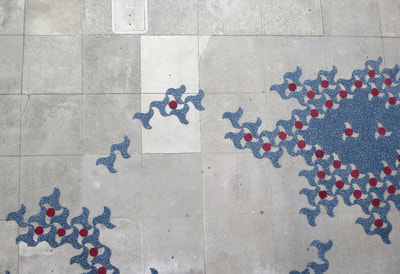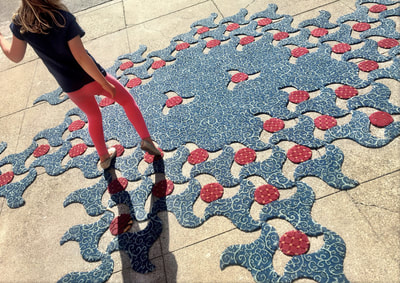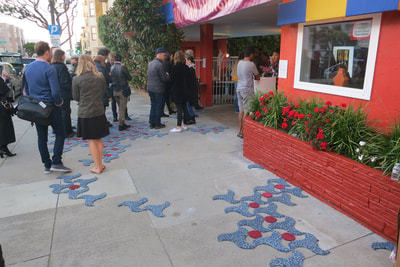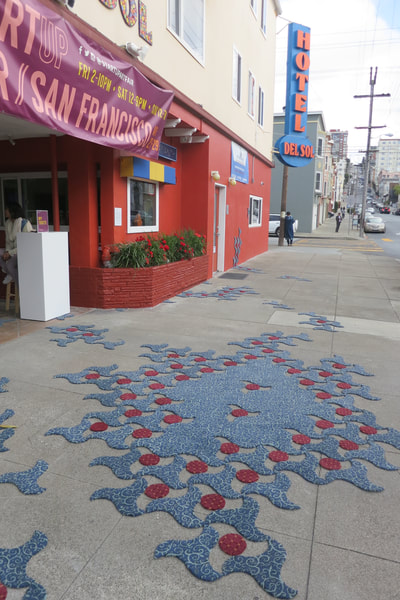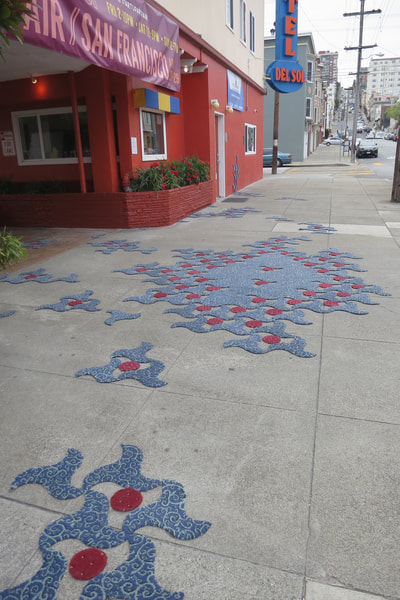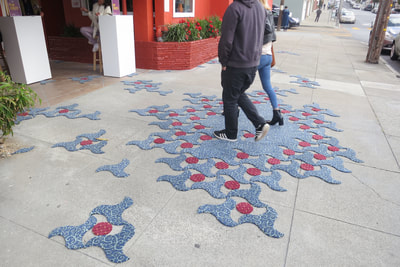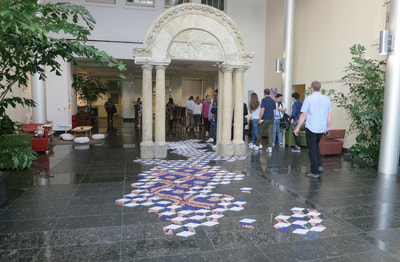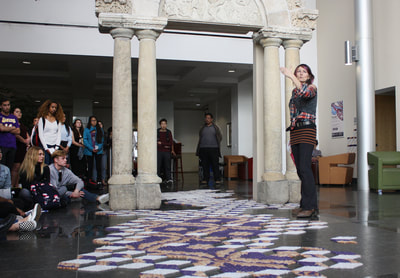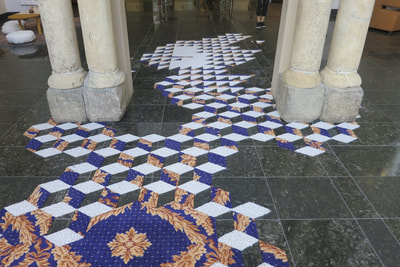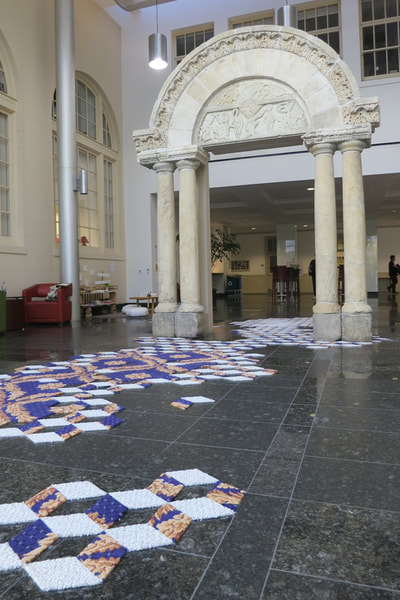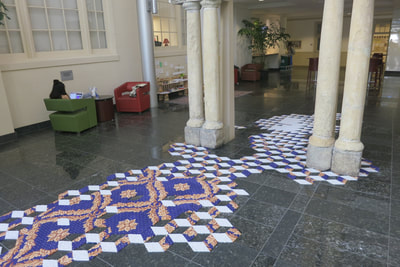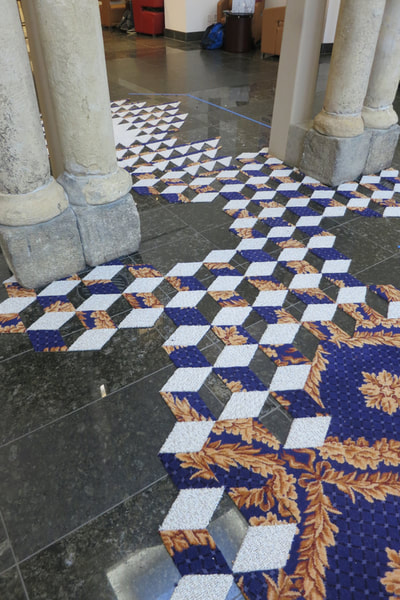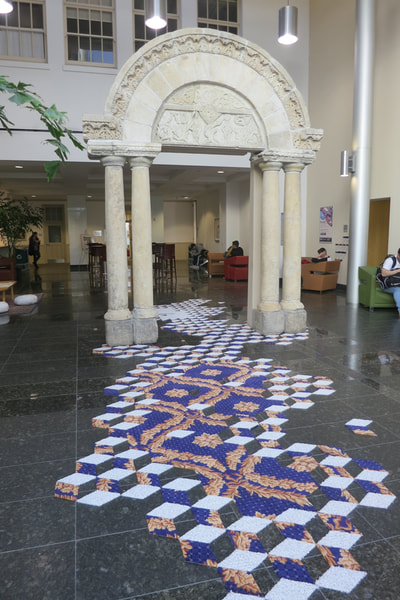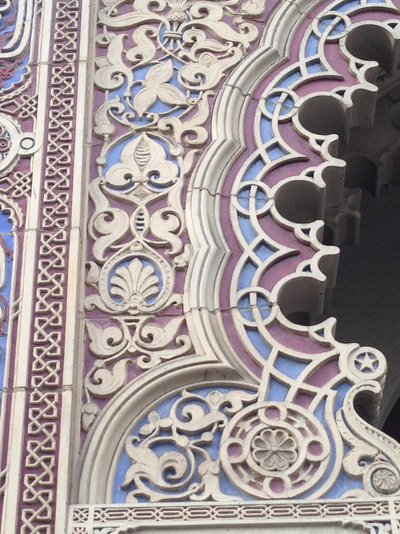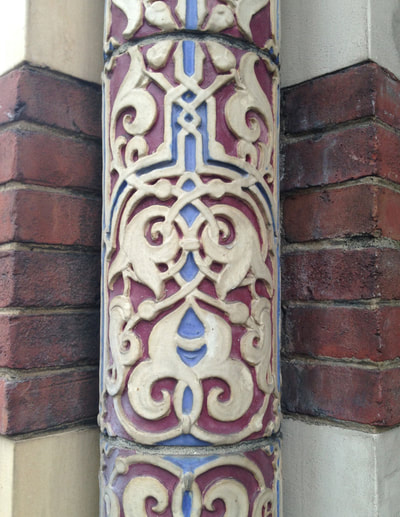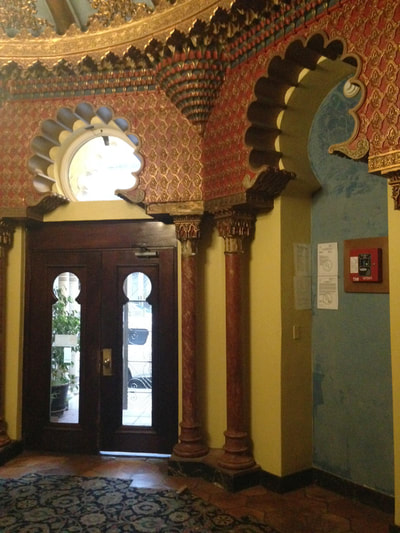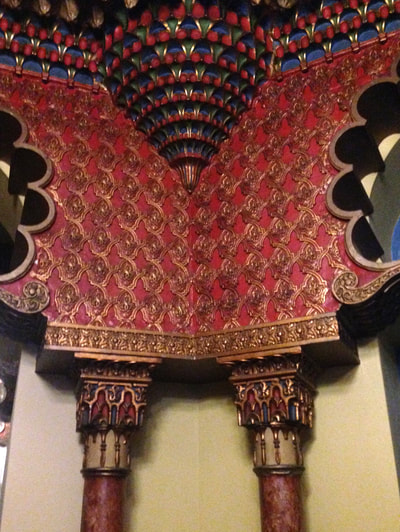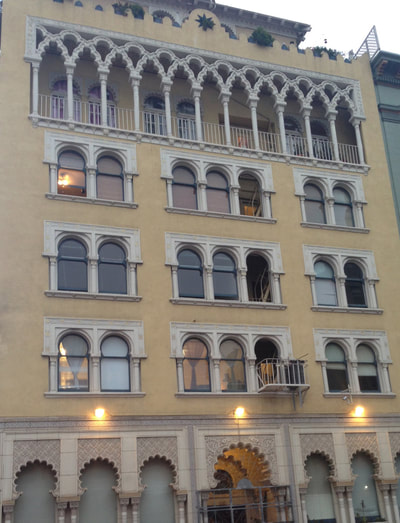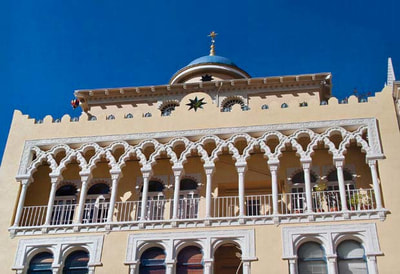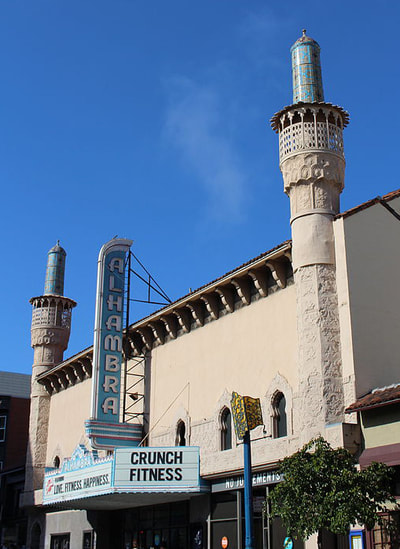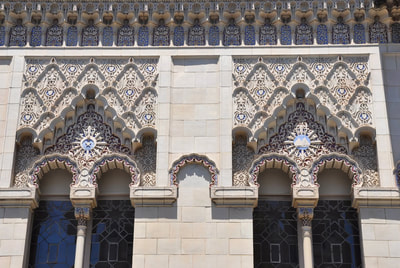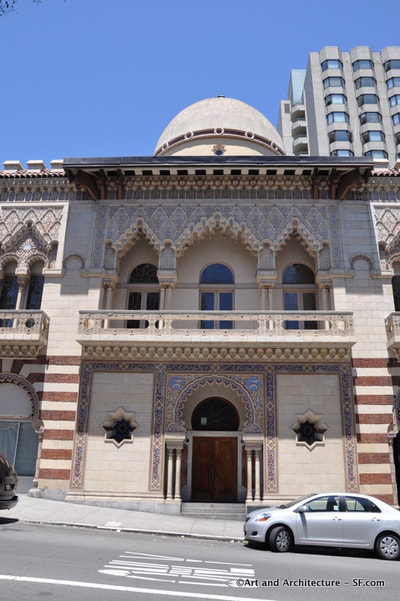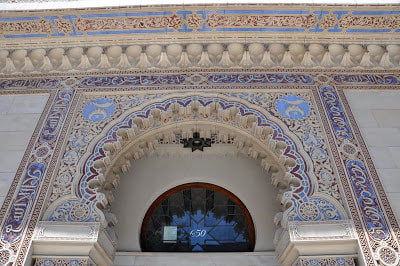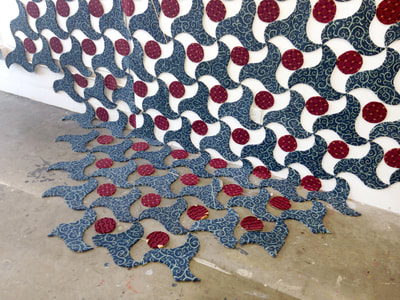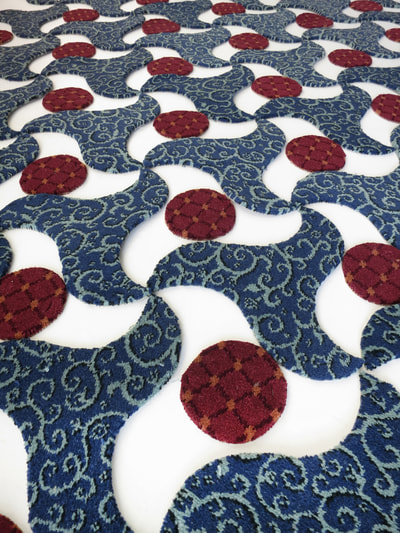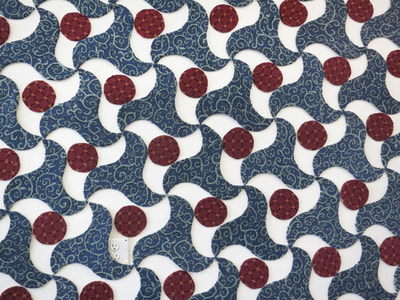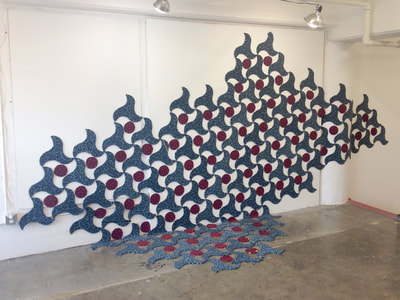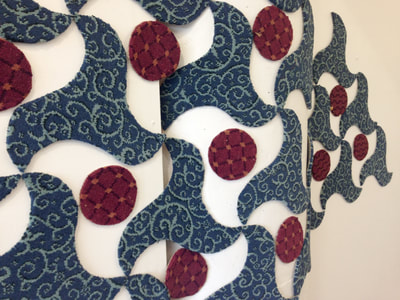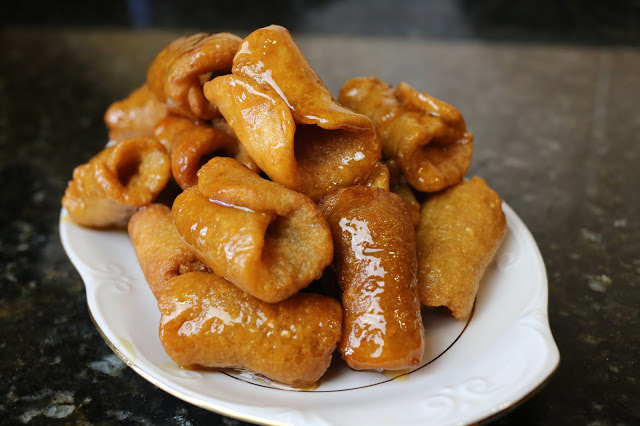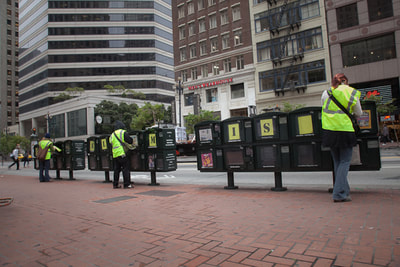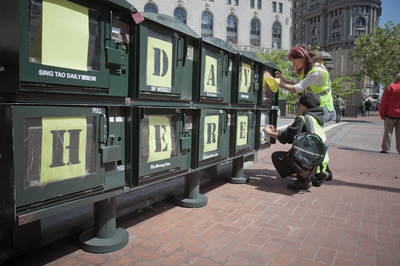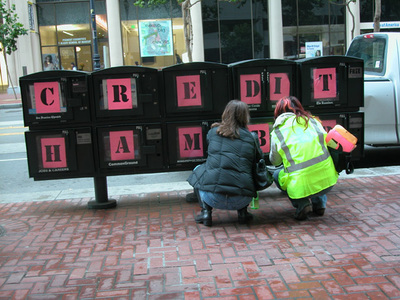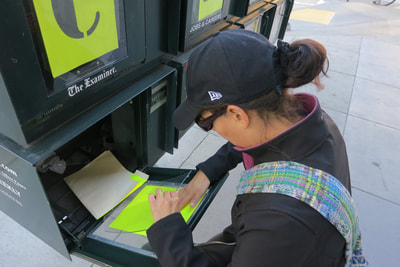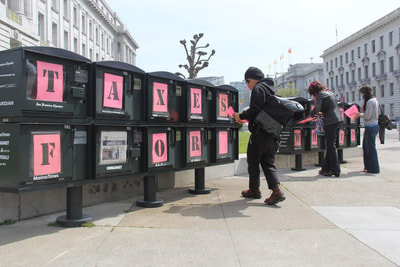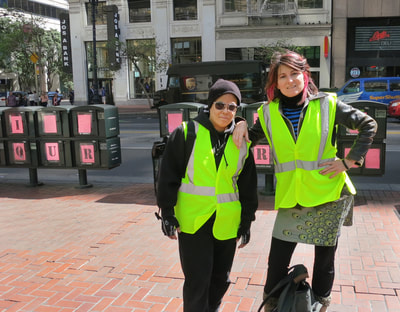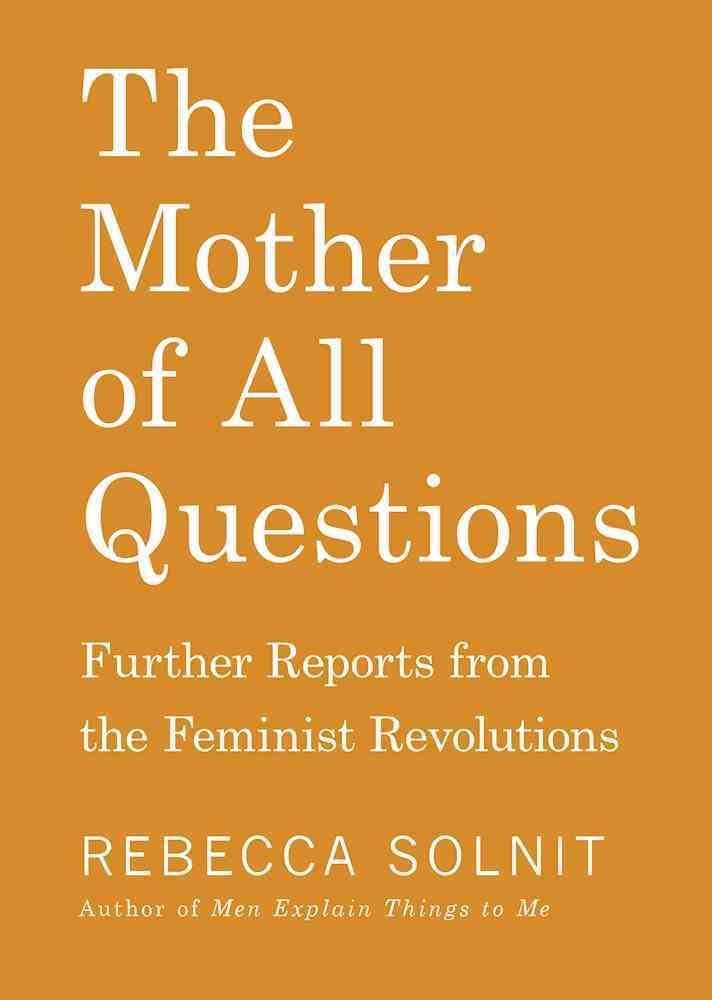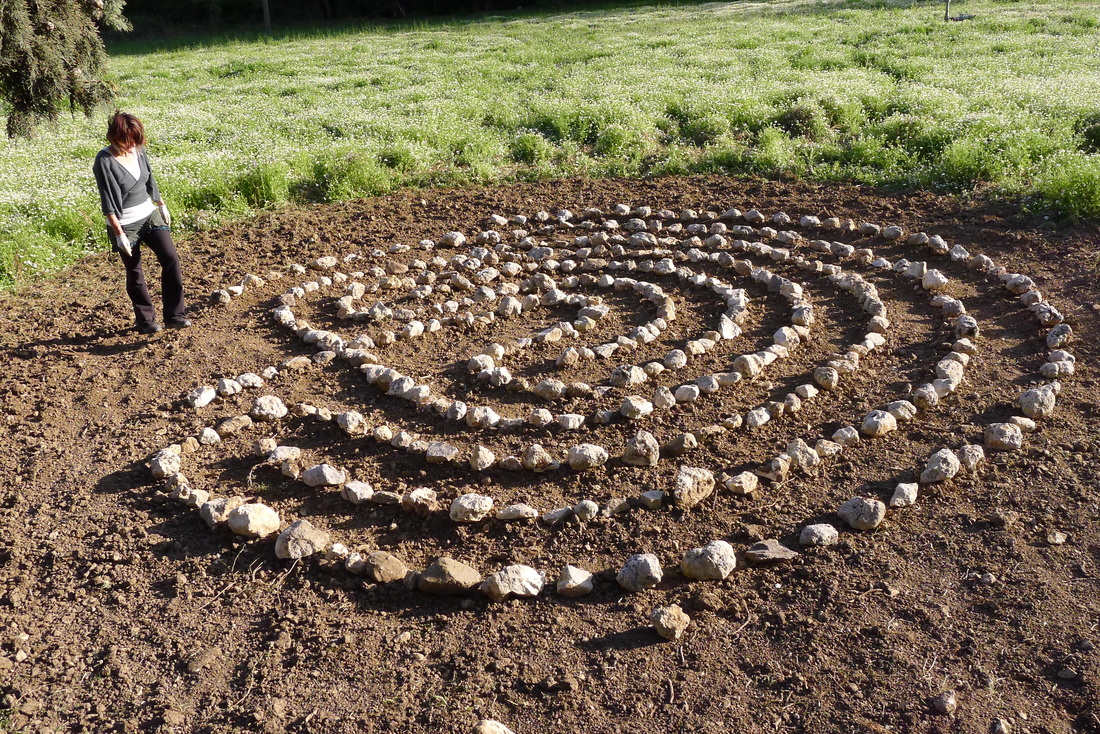|
This site-specific drawing is an intervention that transforms the way we experience the space in relationship to the inner landscape of our psyche. For me a mural is not just an individual action in a pre-defined surface but an inclusion of other elements, both physical and metaphorical, that contribute to change that unidirectional relationship between artist and object. For 838M space I mapped secret herbs that grow in the urban landscape around the location, and claimed their potential to contribute with a story. For a couple of days I walked and collected hidden herbs, following a path of healing that would connect the gallery space with the surround urban flora. The plants, Mint, Mugwort and Fennel, have unique stories, from myth and healing properties to their own origins. By mixing the paint with the herbal remedies and pigments from those plants, I created a particular blend or “potion” to infuse a sense of flow into the space. 836M
836 Montgomery St San Francisco This project will be on view till the end of May, 2020 Learn more about this project here
0 Comments
Botanica “La Mirada”, a research based project developed during my art residency at the Monterey Museum of Art La Mirada, combines traditional herbalism, social critique and personal cartography.
Inspired in the syncretic folk medicine and spiritual traditions of Spanish and Indian cultures, this art project offers an alternative way of looking at issues of colonization, power dynamics and cultural assimilation. Having the city of Monterey as the background, I embarked on a pilgrimage to map gardens from the Spanish and Mexican period, incorporating native, invasive and naturalized plants into herbal remedies that will be shared with the public. This project is informed not only by historic data, but it also incorporates myths and legends that shaped the history of Monterey, from its past forms of colonialism to the present ones. DISCLAIMER: The medicines in this project are all made with natural ingredients grown in Monterey, California. They carry all the healing properties attributed by ancestral knowledge. However, they don’t intend to offer any solution to current health care problems but a playful way to reclaim herbalism as a form of institutional critique and resistance towards our capitalistic culture. BUCOLICA (bucolica californica) Monterey Museum of Art September 6 - December 11 Opening Reception and First Friday Art Walk September 6, 5-8pm Closing Reception and First Friday Art Walk December 6, 5-8pm Bucolica is a multidisciplinary art project that consists of a site - specific installation, a participatory Drawing-Performance and the creation of a tincture. This project revisits the concept of Alchemy as a tool for creation, healing and transformation, and invites the public to directly participate as co-creators. Inspired by the Renaissance Bucolic* genre, the hand cut astroturf pieces feature the Monterey Cypress, a traditional, romanticized and exaggerated example of the local landscape. The leaves and needles of this tree will be used to make a tincture. This plant base extract is available for the public to taste, connecting them with wildcrafting, an ancient practice that acknowledges the necessity of respect and reciprocity between humans and the landscape. Using mass-produced artificial grass recycled from a local park, Bucolica questions the uses of plastic synthetic grass as a substitute for real and sustainable local grasses, highlighting the powerful capacity of art making to transform discarded banal waste into a playful eco-friendly creation. It aims to raise consciousness around pollution and what is called “waste” and encourage actions that will preserve limited landfill space and save precious natural resources.
Bucolica Apothecary - Artist in ResidenceParallel to my exhibition at the Monterey Museum of Art, I'll be an Artist-In-Residence at the MMA La Mirada during the month of September. Herbs have been used for thousands of years, both medicinally and ritually. In pagan and popular traditions around the world, the use of herbs is linked to ritual practice. With the rise of new age spirituality in a skeptical world, we are overwhelmed by the revival of potions, remedies, amulets and spells with the desire of feeling more connected with the natural world. I grew up in a part of Spain where popular culture associated certain plants with specific purposes, specially around pagan celebrations like Solstice or Samhain. This special interest in medicinal plants has taken me to participate a few times at the Northern California Herbal Symposium since I came to California in 2004. I am aware of the healing power of plants and also the role that traditionally they have played in ritual practice. Through my residency at La Mirada, I’d like to explore the relationship between plants, ritual practices and this new global culture. I plan to do a research first about te healing properties of the plants that grow in the garden and other urban areas. Using the New Age metaphysical format I will use La Mirada as a platform where I will be able to research, experiment and create customize recipes, elixirs, and incorporate them into daily rituals. This work will be site-specific, meaning that it will be inspired by the stories of Monterey Bay and it’s people. The art residency will culminate with a ritual/celebration around the Fall Equinox on September 22 with the participation of the local community. 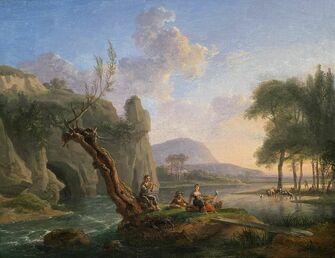 Example of Bucolic Pastoral Painting Example of Bucolic Pastoral Painting Historically, drawing has been linked with performance, and my latest project offers the public the possibility to playfully engage in the process of creation through performance via drawing. As an artist interested in the alchemical power of the creative process, I seek to incorporate the audience into my site-specific art practice, combining improvisation, play and interconnectedness for social transformation. Bucolica* is a multidisciplinary art project that consists of a site- specific installation, a participatory Drawing-Performance and the creation of a medicinal tincture. This project revisits the concept of Alchemy as a tool for creation, healing and transformation, and invites the public to directly participate as co-creators. I’m interested in offering the public a revival of more spiritual strains of thinking against the cold logic of capitalism. Using mass-produced artificial grass recycled from local gardens and parks, Bucolica questions the uses of synthetic grass as a substitute for real and sustainable local grasses, highlighting the powerful capacity of art making to transform discarded banal waste into a eco-friendly creation. It aims to raise consciousness around pollution and what is called “waste” and encourage actions that will preserve limited landfill space and save precious natural resources. I am inviting the public to connect with our natural landscape by tasting a few drops of a tincture I made with local herbs. They will have an opportunity to learn about Herbalism and the traditions of wildcrafting, an ancient practice that acknowledges the necessity of respect and reciprocity between humans and the landscape. They can also play with pieces of synthetic grass to create a grass landscape, emphasizing the powerful combination of Drawing and Performance. *Spanish for Bucolic: A pastoral lifestyle that lends its name to a genre of literature, art, and music that depicts such life in an idealized manner, typically for urban audiences. Happy New Year! And with it comes the long awaited spread of tarot cards, specially by millennials interested in tracking popular culture in search of values, mysteries, and riddles that will make them feel real and spiritual in the context of their virtual technology culture. From a very young age I have studied tarot, ritual and magic as tools to enter the subconscious mind and rescue that side of things that we label as weird and absurd. If we add to this my interest in the popular culture that makes up my hybrid identity, we’ll have the essential ingredients to generate an art project that talks about the intersections between global new age culture, urban space and collective neurosis. Back in 2008, during my art residency at Millay Colony for the Arts in NY, I immersed myself fully in the tarot culture, designing my own cards that I called The Tarot of the Labyrinth. Most recently and after studying tarot for several months with artist/psychologist Victor Brossa and his Syneidesis Method, I rescued an old role of me as a tarot reader, almost like an alter ego, and the relationship it holds with my identity as conceptual and performance artist. Since then I never go anywhere without my tarot cards, which more than predict they inquire, and encourage audience co-creation in a playful way. 2018 marked an important moment of transition as an artist: the 15th anniversary since I arrived in San Francisco at the end of 2003. 15 years of projects where San Francisco, its odd stories, its diverse inhabitants and its complex psyche, has been my inspiration. Along the way installations, performance, guerrilla street intervention and great collaborators. I look forward to more years of creativity where values such as community, urban space and playful approach continue to drive my art practice.
Fall is starting with a new project, a large scale mural at John Yehall Chin Elementary, in the heart of North Beach in San Francisco. Part of the process of creating the mural was orchestrating the collaboration with the entire school, almost 300 K-5 students, director and teachers.
Incorporating the school’s mission, based in Coach Woods Pyramid of Success, I prepared a series of games and exercises for the kids to learn how to use their bodies to express some of the values featured in the pyramid, like friendship, enthusiasm, collaboration, etc. I also introduced the kids to artist Keith Haring's work, street art and traditional mural painting techniques. The final mural consisted of the students bodies outlines transferred onto the wall, creating an intricate web of bodies. The lines and colors emphasized our personal and shared emotions and values. This project is part of my art residency with Leap Arts in Education. I was honored to be invited to create a site-specific installation for the entrance of stARTup Art Fair at Hotel del Sol. During three days, the Hotel gets transformed into a pop-up venue featuring independent artists, non-profit art organizations, art panels, etc.
As part of Special Projects, I transformed the sidewalk and entryway of the hotel into an inviting environment, creating a path that leads the public from the street to the hotel courtyard. Using recycled hotel carpets I designed a repetitive pattern that extends from the floor to the wall evoking an arabesque motive. On it's fourth year, stARTup has become a destination event, attracting artists, art industry leaders, and art collectors from across the U.S. and beyond. Learn more about stARTup Art Fair here PORTALE
Kalmanovitz Hall Atrium and Rooftop Sculpture Terrace University of San Francisco February 5 - March 25, 2018 Open weekdays, 9am - 5pm In Portale, I used two distinct patterns cut from gaudy, repurposed carpets from hotels and casinos to form a path through the portal. At the entrance, the design references tiles from a basilica in Northern Italy where the portal originated. The pattern on the other side draws from the ceiling of San Francisco’s Mission Dolores Basilica featuring an indigenous design painted by the Ohlone people who were imprisoned at the mission. Using gaudy reclaimed carpets from hotels and casinos, I evoke with irony the relationship between the sacred and the profane. In Portale, I explore ideas of passage and transformation through a site-specific installation that creates a path through the stone portal in Kalmanovitz Hall’s Giraulo Atrium to the Nomadic Labyrinth on the building’s rooftop sculpture terrace. Dated 1175-1200, the Romanesque portal featuring Adam and Eve and the Tree of Knowledge was originally from the Chapel of the Penitents in Northern Italy. Taken from its original sacred space and later donated by the de Young Museum to be placed in the heart of an academic building dedicated to the arts and humanities, it is now a reminder of many passages: from one place to another, from the past to the present, from the tangible world to the spiritual realm. Portale reminds viewers of the dynamics between culture and power, past and present. Presented by Thacher Gallery Ramon's Tailor Gallery 628 Jones Street @Geary The Tenderloin, San Francisco December 7, 2017 - February 1, 2018 Opening Reception and First Thursdays Art Walk: Thursday Dec 7, 2017, 6 - 10 pm Closing Reception and First Thursdays Art Walk: Thursday February 1, 2018, 6 - 10 pm Alhambra S.R.O. is a multidisciplinary art project that consists of a site-specific installation and a gastronomical experience drawn from a local immigrant community of the Tenderloin in San Francisco. This project not only playfully engages with the architectural features of the gallery but also comments upon the cultural and social dynamics of this neighborhood. Inspired by the landmark “Alhambra Apartments” on Geary St, I call attention to the irony of the cultural appropriation of Arabic architecture in the early 20th century and the contemporary stigmatization of islamic people in what is perhaps the most culturally diverse neighborhood in San Francisco. The “Alhambra Apartments” is among several buildings in the Tenderloin that are categorized as a Moorish Revival Style of architecture. This exotic style flourished after the 1906 earthquake, when the formerly residential neighborhood of single family homes was rebuilt as multistory buildings often with dramatic facades of the Exotic Revival style. Many of these buildings have become S.R.O. (Single Occupancy Room) Hotels. As a native Spaniard from Jerez de la Frontera, I am aware of the profound influences that Arabic culture left in Andalucia, the Alhambra of Granada being the most important example. In fact, the name “De La Frontera" alludes to the border between the Christians and the Moorish Kingdom of Granada. This Site-Specific installation consists of a geometric patten found in The Alhambra Palace in Granada, Spain, made of hand-cut pieces of recycled carpet from a hotel in the Tenderloin. The pattern will be repeated through the gallery, including floors emphasizing the decorative style of Arabic tiles. Parallel to the artwork, in collaboration with the local community and chef Tomas Marconi, I will create a pastry with influences from Yemeni cuisine and from the Arabic-Andalusi desserts of my home town Jerez de la Frontera. By transgressing the bounds of fine art and invoking gastronomy, we move from spectator to companion, literally one we share bread with. The food serves as a bridge from xenophobic stereotypes to conviviality. The installation also engages the storefront window of the gallery, that will have a postcard featuring the stereotypical Moorish buildings facades of the Tenderloin. Guests are invited upon leaving the space of the installation to take a tour, guided by a copy of a hand-drawn map of buildings, restaurants, markets, and mosques—All features of a neighborhood, full of neighbors to meet as well. Learn more about Tomas Marconi phd here
Daily Slots, the guerrilla art project in collaboration with Eliza Barrios, will be featured at the Luggage Store Gallery's next exhibition. Addressing artist who have to navigate or break the law in order to express themselves, this upcoming show called ILLEGAL opens this coming Friday.
Daily Slots is an ongoing project that reflects the issues that affect our city. Using the newspaper stands located along Market, Montgomery Street and Civic Center Plaza as “vehicles to deliver information”, my collaborator and I send messages through the windows of these structures. Altering the visual landscape of the pedestrian/urban environment, the messages are a mixture of iconography and slogans that call attention to the economy, consumerism and un-sustainability of the capitalistic culture. ILLEGAL The Luggage Store Gallery, San Francisco Nov 10 - Dec 16, 2017 Opening, Friday Nov 10, 6 - 9pm (music performance by Tropical City) |
NewsThe Grand Façade Books
The Mother of All Questions VideosArtAmari Residency
in Crete and the creation of a labyrinth |
